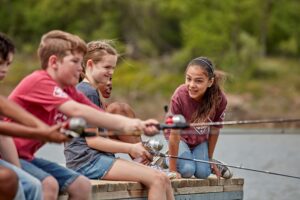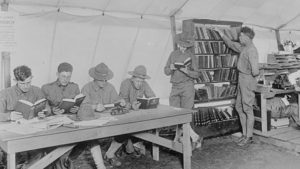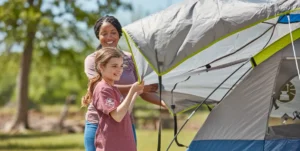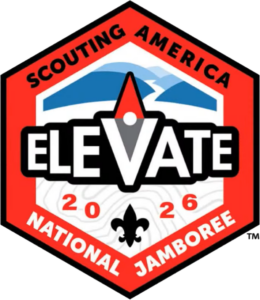Trail to adventure Blog
Trail to adventure Blog
Latest Edition

Camping
It is no secret that the success of your summer camp hinges on the quality of your staff. Enthusiastic, skilled, and dedicated camp staff can turn a good program into an unforgettable experience for Scouts. But how can your council find the right candidates? Let’s talk about some strategies for effectively recruiting summer camp staff, highlight top job sites like Jobs.ScoutLife.org, and share tips for crafting compelling job postings.
1. Leverage Scout-Specific Job Boards
One of the best places to begin your search is within the community of those already passionate about Scouting. Scouting America maintains an excellent website for posting camp jobs at Jobs.ScoutLife.org. This site provides a platform where councils can connect with people who already know and appreciate the Scouting program. You can post jobs for your camp and see what jobs are available.
When posting on a Scout-specific job board make sure to:
- Be Descriptive: Clearly outline the position, responsibilities, and skills required.
- Highlight the Perks: Camp jobs offer more than pay-promote benefits like leadership development, outdoor skills training, and the chance to make a difference. Make sure to highlight these aspects.
- Post Early: Get ahead of the hiring season by posting positions in the fall or early winter to capture early applicants. Now is not too soon.
2. Expand Your Reach on General Job Sites
While Scout-specific platforms are optimal, you should also consider posting on general job boards, such as Indeed or ZipRecruiter, or seasonal work-centered venues like CoolWorks. These websites will help you find candidates both inside and outside of the Scouting world who are ready to have a life-changing summer adventure. Some of these sites may require subscription or charge fees but a little spending here can help you not be in crisis mode later.
3. Tap into Local Colleges and Universities
Tons of college students are looking for meaningful summer work that means more than just earning a paycheck.
Reach out to:
- Career Services: Ask to post on campus-sponsored job portals.
- Outdoor Programs: Reach out to departments focused on recreation, leadership, and education majors. Some schools even have an outdoor recreation major with students looking for internships.
- Student Organizations: Clubs such as outdoor adventure groups, leadership societies, or Scouting-related organizations can be an excellent fit.
4. Engage Your Alumni and Volunteers
Active and former Scouts, camp staff alumni, and council volunteers can be some of your top ambassadors.
Encourage them to:
- Share Openings: Ask them to share job postings with their networks.
- Recruit Friends: Incentivize them to refer qualified candidates.
- Join the Team: Many volunteers may be eager to step into a paid seasonal role.
5. Leverage Social Media
Platforms like Facebook, Instagram, and LinkedIn are potent tools for recruiting staff.
To maximize social media:
- Post Engaging Content: Share photos or videos of past camp staff in action. Use the staff themselves to help you create this content.
- Tag and Share: Tag local Scout groups, councils, or outdoor enthusiasts.
- Run Ads: Use targeted ads targeting people with interests in camp, outdoor, and leadership employment. These are marketing dollars well spent on your camp. This can help you more than investing in an out-of-date camp video.
6. Write Killer Job Postings
A great job posting can make all the difference. Here are a few tips:
- Use an Attention-Getting Title: Instead of ”Camp Counselor,” or “Summer camp staff” how about “Outdoor Adventure Leader” or ”Scout Skills Specialist.”
- Be Specific: Include duties, pay, location, and how to apply.
- Sell the Experience: Highlight what’s unique about the camp, such as waterfront activities, high adventure programs, or conservation projects.
- Call to Action: Invite candidates to apply and let them know why they won’t want to miss the opportunity.
7. Job Fairs and Events
Attend local job fairs, with an emphasis on seasonal or outdoor recreation-related events. Bring visuals -a banner, videos, testimonials of your staff- to help describe your unique camp culture.
8. Establish a Pipeline for Recruitment Year-Round
Year-round, stay in contact with returning and prospective staff through the following ways:
- Keep in Touch: Send newsletters or other information related to camp opportunities
- Off-Season Opportunities: Include prospective staff in council activities throughout the year.
- Building a Leadership Pathway: Design programs to develop the skills of older Scouts and young leaders with the potential for future staffing.
9. Start Early and Stay Focused
Recruiting summer camp staff is a year-round job that demands imagination and follow-through. Through utilizing online platforms such as Jobs.ScoutLife.org, tapping social media, and networking through local institutions, your council will recruit the team for a fantastic next camp season.
For more information, resources, or assistance, do not hesitate to reach out to the Outdoor Programs team at the outdoorprogram@scouting.org.

Camping
For those looking to add an exceptional program feature to their summer camp in 2025, take a look at the International Camp Staff Program (ICSP)! The aim of the program is to bring American scouts into contact with Scouts and Scouters from across the globe. Scouts can learn first-hand from international camp staffers about their nation’s Scouting program, their culture, and their customs. For many, this could be a Scout’s first chance to meet someone from another country, creating a summer camp experience they will remember forever.
The great service rendered by the international camp counselors is that they bring to camp the flavor of international Scouting and give significance to the world brotherhood ideal. Many young Scouts do not realize that Scouting is a worldwide program with over 50 million members in over 170 countries.
A great article on the World Organization of the Scout Movement (WOSM) website (https://www.scout.org/news/3-benefits-international-friendship) says having friends from different parts of the world can change our Scout’s lives. International connections and friendships can help Scouts in their personal development and fulfilment. They will learn to appreciate commonalities and differences, expand their perspectives, develop new skills, and maybe even enjoy unique travel experiences according to the article.
Three big benefits of having international friends are gaining a global vision, improving communication skills and feeling at home around the world. Scouting is about helping our future leaders be prepared for their futures.
Through the ICSP, participating Scouts are likely to learn about a new culture, traditions, habits, foods, language, ideas and more. Scouts will laugh as they overcome communication barriers and learn that a smile is the universal language.
The International Camp Staff Program is approved, certified and continually reviewed by Scouting America. Many will remember that previously this program was a function of the International Department. With the restructuring of Scouting America, the ICSP is now a function of Scouting America’s International Committee however, the goals, purposes and objectives of the program remain the same. What was once an entirely in-house program, now requires some specialized services by an external visa vendor, arranged through the ICSP team.
Councils are billed $520 by the visa vendor, but not until they have selected an international camp staff participant and notified the ICSP Team. Local councils should have prospective international staff members participate in a Zoom interview and sign a staff agreement just like US staff members.
Want more information? Please submit any questions, concerns or suggestions you might have through the interest form at https://bit.ly/ICSPCouncils2025.

Safety
The Council Health Supervisor (CHS) is a pivotal figure within Scouting America, dedicated to safeguarding the health and safety of Scouts, leaders, and volunteers. While the position is often confused with the Camp Health Officer, this article shares the responsibilities, qualifications, and contributions of this essential role, shedding light on how the CHS ensures a safe and supportive environment for local councils.
Who is a Council Health Supervisor?
The CHS is a licensed physician who serves as the local council’s primary medical advisor, providing expertise and guidance on all health-related matters. This individual is also a registered Scouter trained in Youth Protection, ensuring a deep understanding of the unique needs and challenges faced by the Scouting community.
Qualifications of a Council Health Supervisor
To fulfill their responsibilities effectively, the CHS must:
- Be licensed to practice medicine in the state(s) where the council operates.
- Hold expertise relevant to camp and youth health and safety.
- Collaborate with other medical professionals when council programs span multiple states.
Core Responsibilities
The Council Health Supervisor plays a multifaceted role, encompassing oversight, education, and strategic input. Some key responsibilities include:
- Health Oversight and Risk Management
- Serves on the council’s Enterprise Risk Management (ERM) or Health and Safety Committee.
- Oversees camp health lodge operations and ensures compliance with national camp standards.
- Assists with reviewing the Council Medical Care Policies Manual each year (NCAP HS-505).
- Writes and approves the camp’s on-site treatment procedures or standing orders (NCAP HS-506).
- Reviews camp First Aid Logs and provides actionable feedback to improve care practices.
- Incident Reporting and Policy Approval
- Works with the council’s ERM committee to ensure health and safety incidents are properly reported.
- Reviews and approves medication processes and standing orders required by camp standards.
- Education and Training
- Assists in training and orienting health lodge staff.
- Provides health education on topics such as first aid, CPR/AED, and wilderness first aid to Scouts and leaders.
- Medical Guidance and Criteria Development
- Advise on medical guidelines for high-adventure activities and other programs where participant health may pose risks.
- Reviews medical records for participants attending national events to ensure compliance with health standards.
- Local Council Support
- Convenes and leads meetings on communicable disease management.
- Assists in interpreting and implementing national health guidelines as they relate to the local council.
- Develops medical communications for leaders, parents, and media as needed.
The CHS’s Impact on Scouting
By providing expert medical guidance, the Council Health Supervisor enhances the safety and preparedness of local councils. Their work helps to mitigate risks, ensure compliance with national standards, and foster a culture of health awareness within Scouting.
Through their collaboration with council leaders, the CHS plays a crucial role in shaping policies that protect Scouts, leaders, and volunteers, ensuring that every participant can thrive in a safe and supportive environment.
The Council Health Supervisor is more than a medical advisor; they are a cornerstone of the Scouting community’s commitment to health and safety. Their expertise and dedication ensure that local councils can deliver transformative experiences to youth while upholding the highest standards of care.

NCAP
As of January 1, 2025, the updated National Camp Accreditation Program (NCAP) standards will be in effect. Councils must review these updates to ensure compliance and maintain safe, high-quality programs. The latest standards can be downloaded from the NCAP website at https://www.scouting.org/NCAP or directly via this link.
How to Identify Changes in the Standards
There are two ways to locate updates to the NCAP standards:
- Table of Contents Annotations: The table of contents notes changes to standards for 2024 and 2025.
- Circular #22: This document provides a detailed breakdown of changes, standard by standard. Access Circular #22 here.
Key Changes Councils Should Note
NCAP Standard PD-112:
Councils must adopt and implement a plan to review every activity at all types of camps at least once every three years. This review focuses on identifying and addressing any significant incidents to improve participant safety.
NCAP Standard SQ-406:
Following a change in American Red Cross policy, individuals completing the National Camping School’s Aquatics Director Section will no longer be certified to train lifeguards. Camps must:
- Ensure aquatics staff receive proper training elsewhere, or
- Have someone in the council become an American Red Cross Lifeguard Instructor to train staff as required.
As of January 1st, 2025 the BSA Lifeguard program is no longer being taught. Once a person’s current certification expires, it cannot be renewed.
NCAP Standard SQ-412:
Clarifications have been made regarding First-Year Camper Directors. These directors must demonstrate specific knowledge to receive a council waiver if they have not attended National Camping School to become Outdoor Program Directors.
NCAP Standard FA-717:
A quick reminder, as of January 1, 2024, all beds with mattress foundations more than 30 inches above the floor must have guardrails to prevent falls. This requirement applies to all beds in buildings, Adirondacks, tents, and other sleeping areas.
Additional Notes and Deadlines
Several other changes to the standards have been made. Councils and camp staff are strongly encouraged to thoroughly review the updated standards to ensure compliance. Failure to meet these standards during an assessment could result in the temporary closure of non-compliant areas.
May 15 Deadline:
All summer programs must submit their Declaration of Readiness to their assessment team leader by May 15 for review.
Need Help?
For more information about the updates or assistance with the standards, contact your local NCAP Zone Coordinator or email ncap@scouting.org. Staying informed and prepared will ensure that your camps provide safe, enriching experiences for all participants.

Camping
Winter camping with a Scout unit of 20 to 40 Scouts can be an incredible adventure. However, the potential for environmental impact increases significantly with larger groups, especially in fragile winter ecosystems. Practicing Leave No Trace (LNT) principles is essential to ensure the natural world remains undisturbed. Here are some tips to help you plan and execute a responsible winter camping trip:
Planning Ahead
Preparation is the foundation of Leave No Trace camping. Winter environments can be harsh, so careful planning is critical for both safety and minimizing environmental impact.
- Research the Area: Select a campsite that can accommodate your group without causing excessive impact. Check local regulations and guidelines.
- Know the Conditions: Monitor weather forecasts and ensure everyone packs clothing and gear suitable for freezing temperatures, snow, and ice.
- Divide and Conquer: Break the group into smaller patrols to minimize the impact on any one area.
Choosing a Campsite
Winter landscapes are delicate, with snow-covered vegetation and fragile ecosystems beneath. Proper site selection is crucial to prevent long-term damage.
- Stick to Trails: Travel on established trails or deep snow to avoid damaging underlying vegetation.
- Choose Durable Campsites: Camp on snow, ice, or bare ground, and stay at least 200 feet from water sources to protect riparian zones.
- Avoid Sensitive Areas: Stay away from meadows, young trees, and wildlife habitats. Rotate high-traffic areas within your camp to prevent snow compaction and damage.
Managing Waste
Improper waste disposal can harm wildlife and pollute water sources. Responsible waste management is a core LNT principle.
- Pack It In, Pack It Out: Carry out all trash, including food scraps, in sealable bags. Don’t leave anything behind.
- Dishwater Disposal: Strain dishwater to remove food particles, scatter the water away from camp, and pack out any solid waste.
Using Fire Responsibly
Campfires can scar the environment and deplete natural resources. Limit their use and focus on sustainable practices.
- Use Stoves: Opt for camp stoves over fires for cooking and warmth whenever possible.
- Fire Rings: If fires are permitted, use established fire rings or build a mound fire on durable surfaces like snow.
- Limit Firewood Use: Gather only small, dead wood from the ground and completely extinguish fires before leaving.
Respecting Other Visitors
The wilderness is a shared space. Show respect to others to ensure everyone has a positive outdoor experience.
- Yield on Trails: Step aside for smaller groups or individuals and avoid creating deep ruts with snowshoes or skis.
- Leave It Better: Sweep the area for litter or damage, even if it wasn’t caused by your group.
Special Considerations for Large Groups
Larger groups naturally have a greater impact, so additional precautions are necessary to reduce their footprint.
- Educate Participants: Before and during the trip, remind Scouts of Leave No Trace principles and encourage adherence.
- Share Gear: Minimize duplication by using communal tents, cooking equipment, and other shared items.
By diligently applying Leave No Trace principles, Scout groups can enjoy the unique challenges and beauty of winter camping while preserving the wilderness for future generations.

NCAPProperties
Scouting America is excited to announce the release of its newly updated Pre-Camp and Post-Camp Inspection Form, a comprehensive tool designed to enhance safety, sustainability, and organization during camping experiences. This updated form is now available for download and serves as an essential resource for Scout leaders to ensure their campsites are both ready for use and properly restored after each visit.
A Streamlined Process for Camp Management
The updated form simplifies the often complex process of campsite preparation and cleanup by offering a clear, step-by-step checklist. Covering key areas such as safety hazards, equipment inspections, waste disposal, and environmental restoration, the form ensures that no detail is overlooked. Its user-friendly format is designed for both experienced camp management professionals and volunteers and those new to the process, making it a versatile tool for all units.
Promoting Long-Term Planning
Beyond immediate use, the form is a powerful asset for long-term planning in local councils. By consistently documenting pre- and post-camp conditions, leaders can identify trends, recurring issues, and areas requiring maintenance or improvement. This data empowers councils to allocate resources more effectively, schedule necessary repairs, and proactively address environmental or safety concerns.
Ensuring Safety and Compliance
Safety is a cornerstone of Scouting, and the updated inspection form reinforces this value. Leaders can systematically assess potential risks, such as unstable ground or hazardous debris, ensuring a safe experience for all participants. Additionally, using the form helps units meet local regulations and Scouting America guidelines, demonstrating a commitment to responsible outdoor practices.
Per FA-701, the Pre-Camp and Post-Camp Inspection process should be completed before the Declaration of Readiness. For camp properties that serve solely as year-round camps, the review may be scheduled at the convenience of the council, so long as it is conducted annually .
Strengthening Local Councils
For councils, adopting the updated form ensures consistency and standardization across camp properties. The collective data gathered from multiple campsites can inform strategic planning, infrastructure improvements, and program development. By integrating the form into their operations, councils can better support their properties and enhance the overall quality of their programs.
A Tool for the Future
Scouting America’s updated Pre-Camp and Post-Camp Inspection Form is more than just a checklist—it’s a step toward a safer, more sustainable, and better-organized future. By embracing this tool, camp leaders and councils can elevate their camping programs and properties while preserving the natural environments that inspire generations of Scouts.
Get Started Today
Your council is encouraged to download the updated form and incorporate it into their property’s opening and closing procedures. By adopting this resource, camp management can contribute to a legacy of excellence, ensuring that every camping experience leaves a lasting positive impact on both participants and the environment.

CampingCub Scouting
As the weather warms and nature begins to bloom, spring offers a perfect opportunity for local councils to provide engaging outdoor programming that excites Cub Scouts and encourages participation. For camp leadership, crafting innovative spring activities can bridge the gap between winter hibernation and the summer season, ensuring Cub Scouts remain connected to the Scouting program while building anticipation for day camp or long-term camp. Here are some creative ideas for districts and councils to implement:
1. Spring Nature Exploration Events
Organize guided nature hikes or wildlife exploration days at camp properties. With a focus on discovery, Cub Scouts can learn about plants, animals, and ecosystems coming alive in the spring. Adding themed scavenger hunts or badge-related activities can create an educational and entertaining experience while familiarizing Scouts with your camp properties.
2. Outdoor Skills Workshops
Host day or weekend events focused on age-appropriate outdoor skills. Activities like knot-tying, shelter building, fishing, and basic first aid provide hands-on experiences while preparing Cub Scouts for future adventures. Incorporating skills into fun challenges or games ensures that learning remains engaging and enjoyable.
3. Themed Adventure Days
Plan themed adventure days to ignite imaginations. For example:
- Pirate Adventures: Include treasure hunts, map reading, and water-related activities.
- Wild West Days: Teach archery, introduce simple outdoor cooking, and offer horseback riding or stick pony races.
- Superhero Training Camp: Incorporate obstacle courses, teamwork challenges, and problem-solving activities.
Themes like these not only attract participation but also give Cub Scouts a taste of summer camp excitement.
4. Spring Service Projects
Encourage Cub Scouts to give back to their communities with spring service projects. Clean-up days at local parks, planting flowers or trees, and repairing trails teach valuable lessons in stewardship and community involvement. Hosting these events at campgrounds can also help prepare your property for summer use while connecting Scouts to the space.
5. Cub Scout Camp Preview Days
A spring open house or camp preview day can familiarize parents with your camp’s amenities and programming. Offer short rotations of camp activities like BB guns, archery, and crafts to provide a taste of what summer camp will bring. This not only builds excitement for day camp or long-term camp but also increases early registrations.
6. Family Picnic and Campout Events
Invite Cub Scouts and their families to a spring picnic or overnight campout. Pair the event with simple games, a nature walk, or a campfire program to showcase your facilities and the fun awaiting in Scouting. These events help build relationships with families and create lasting memories.
7. Outdoor STEM Programs
Integrate STEM (Science, Technology, Engineering, and Math) into outdoor activities. Build weather stations, experiment with water filtration, or explore solar energy through hands-on projects. Combining STEM with the outdoors encourages curiosity and keeps Scouts engaged in learning outside the classroom.
8. Springtime Cub Olympics
Host a Cub Scout Olympics event featuring fun, age-appropriate challenges like sack races, relay races, tug-of-war, and water bucket relays. Add a recognition element with medals or ribbons to celebrate participation and achievements.
Enhancing Spring Programs for Camp Leadership
To make these programs successful, camp leadership can focus on:
- Marketing: Use newsletters, social media, and school outreach to promote events. Highlight the fun and educational benefits of participation.
- Partnerships: Collaborate with local organizations, nature centers, or experts to enrich programming with unique resources and knowledge (PD-109).
- Volunteer Engagement: Recruit dedicated volunteers or older Scouts to assist with running activities, ensuring smooth operations and mentorship opportunities.
- Feedback Loops: Gather feedback after events to continuously refine and improve programming for future seasons.
By offering creative and engaging spring outdoor programs, local councils can keep Cub Scouts excited about Scouting, strengthen family connections, and build momentum for summer day camp or long-term camp. The key lies in fostering a love of the outdoors while ensuring activities are fun, meaningful, and memorable.

Conservation & Environment
In celebration of the 70th anniversary of the Conservation Good Turn for America, Scouting America is introducing Scouting for Clean Waterways, a nationwide initiative aimed at addressing the critical issue of waterway and marine debris. This program, in partnership with Clean Hub and Goal Clean Seas Florida Keys, offers Scouts of all ages the opportunity to make a meaningful impact on the health of our waterway ecosystems. Clean Hub has agreed to match the poundage of plastics that Scouting America collects and removes from these areas and coordinate the collection in other countries. This partnership doubles the impact that we collect.
The concept of Scouting for Clean Waterways was launched as part of an existing Sea Base program in 2022. The program is coordinated by the National’s Outdoor Program & Properties Team, Outdoor Ethics & Conservation Subcommittee and the International Committee.
Why it matters
Each year, millions of tons of plastic and other man-made materials enter our water bodies, endangering marine life, disrupting habitats, and imposing economic costs. This aquatic trash often comes from dry lands miles away from our water resources. Aquatic trash poses a significant threat to the health of our oceans, lakes, rivers, and associated ecosystems. By participating in Scouting For Clean Waterways, Scouts can help address this critical issue and make a positive difference in their communities and beyond.
Scouting For Clean Waterways also supports several Sustainable Development Goals (SDGs) outlined by the United Nations, including:
- Clean Water and Sanitation
- Life Below Water
- Life on Land
- Responsible Consumption and Production
- Partnerships for the Goals
How can my unit get involved?
- Talk with your council’s leadership to see if they are planning on coordinating any large council or district events. If not, start organizing a clean up for everyone in your unit to participate.
- Visit the Scouting for Clean Waterways website: Here you can find all the program-related documents that will help you plan your unit’s Scouting for Clean Waterways service project including a Quick Guide to the program specifics, In addition to information about Scouting for Clean Waterways, at the bottom of the webpage you can also register to receive e-mail updates. Be the first to know about important program milestones and deadlines. The link to the SCW website is: https://www.scouting.org/outdoor-programs/scouting-clean-waterways/.
- View and follow the Scouting for Clean Waterways Facebook page: This is another great resource when planning your SCW service project. Learn about best practices and successful projects completed by other units.
- Once you have completed your clean up, go to Scoutbook and enter it in the service hours area, and record it as a Scouting for Clean Waterways project. Your information will be recorded as part of the nationwide initiative. When you post pictures on your unit’s social media feeds, please include #cleanwaterscouts.
Units, Districts and Councils can conduct these clean ups any time through out the year. A lot of councils are aiming for April, May and June which coincides with Earth Day and Earth Month, but any time works. Unfortunately there is a lot of trash, so any and everything helps.
For specific questions please check the website, the Facebook page, or email cleanwaterscouts@scouting.org

Aquatics
The announcement of the retirement of the BSA Lifeguard certification program, effective December 31, 2024, marks a significant shift in how Scouting America camps and councils approach lifeguard training. This change underscores the importance of proactive planning to ensure the continuation of high-quality lifeguard training and certification for summer camps and year-round aquatic programs.
Steps for Camps and Councils to Prepare:
To ensure a seamless transition, council and camp leadership should take the following steps:
Identify Your Training Plan Early
Begin establishing partnerships with organizations like the American Red Cross or YMCA. Both offer robust training programs and instructor certification pathways. If you do not have a current training agreement with the American Red Cross, reach out to the National Health & Safety Team for help.
Leverage the Transition Opportunity if Applicable
Scouting America has outlined a clear path for current BSA Lifeguard instructors to transition into nationally recognized training certifications. This pathway ensures existing expertise within camps is not lost. Individuals who are currently certified as lifeguard instructors through Scouting America can opt to “crossover” with American Red Cross crossover course. Details can be found here.
Educate Stakeholders
Share information about the transition with camp staff, volunteers, and parents. Communicate how the shift to nationally recognized lifeguard certifications enhances safety and aligns with Scouting America’s commitment to youth development.
Plan for Implementation
Plan now for additional time to get lifeguard instructors certified who can in turn certify your camp/council lifeguards. Ensure enough time for instructors to complete new certifications before the 2025 camping season.
National Camping School aquatics instructor training will no longer include lifeguard instructor training; however, most NCS courses will provide a pre-conference opportunity to become certified as a lifeguard instructor.
Attend the BSA Lifeguard Transition Webinar
Taking place on January 16th at 7 pm CT, this webinar will help councils walk through the step by step process to be prepared to certify lifeguards moving forward. Register here.
Aquatic safety has always been a cornerstone of Scouting’s outdoor programs. While the BSA Lifeguard program’s legacy comes to an end, this transition ensures camps and councils can maintain—and even enhance—the quality of their aquatic programs. The National Aquatics Committee remains a committed partner to supporting councils and camps during this time of change.
For more information and resources, visit the BSA Lifeguard Instructor Transition page or contact the national outdoor programs and properties committee. Let’s work together to ensure a safe, successful 2025 and beyond.

Sponsored Content
[Sponsored Content]
Dear Scouting America Leaders,
As you prepare for the changes to the National Camp Standards that took effect on January 1st, we understand that keeping your camp environment safe and compliant is a top priority. The new policy will require all upper bunks to have guardrails, designed to reduce the risks of injury and enhance the safety of campers. This is the perfect time to evaluate your camp’s bunk beds and ensure they meet the new standards, and we’re here to help!
Why Our Heavy-Duty Metal Bunk Bed Frames Are the Best Choice for Your Camp
At HeavyDutyBunkBeds.com, we specialize in providing durable, safe, and compliant bunk bed frames designed to withstand the high demands of camp environments. Here’s why our heavy-duty metal bunk bed frames are the ideal solution for your camp:
- Built for Safety and Compliance
Our bunk beds come equipped with sturdy, fully integrated guardrails that meet or exceed the required height and safety standards, ensuring your camp is compliant with 2025 National Camp Standard FA-717. - Bed Bug Resistant Design
Our frames are designed with welded tubes on all four sides, creating a solid and smooth surface that prevents bed bugs from entering or nesting in the frame. This added feature makes it much easier to keep your camp environment safe and hygienic. The welded construction also eliminates gaps that could serve as hiding spots for pests, offering peace of mind to camp staff and parents alike. - Durability That Lasts
Our heavy-duty metal frames are engineered to withstand years of high-traffic use in camp settings. Constructed from high-quality materials, they are rust-resistant, strong, and built to handle the rough and tumble of camp life, ensuring that your investment lasts for many seasons to come. - Easy to Maintain
Designed for easy assembly and minimal maintenance, our metal bunk beds are perfect for busy camp staff. The robust construction ensures that the frames remain secure, while the simple design makes it easy to clean and inspect for safety over time. - Comfort and Stability
Your Scouts deserve a comfortable, stable, and secure place to rest after a day of activities. Our bunk bed frames provide a solid foundation for mattresses, ensuring campers sleep soundly without worrying about wobbling or instability. - Cost-Effective for Camp Budgets
We understand that camps operate on tight budgets, which is why we offer competitive pricing for our heavy-duty metal bunk beds. You get superior quality and durability at a price that fits your camp’s financial needs.
Ensure Your Camp Is Ready for 2025
With the new bunk bed safety policies that went into effect on January 1st, 2025 (NCAP Standard FA-717), now is the time to upgrade or replace your old bunk beds to ensure your camp is fully compliant. Our heavy-duty metal bunk bed frames meet all the necessary safety standards, are built to last, and provide your campers with a secure, comfortable environment for restful nights and exciting days ahead.
Reach out to us today to learn more about our products, request a quote, or schedule a consultation. We’re here to help you ensure your camp stays safe, compliant, and ready for whatever adventure comes next!
Best regards,
Dick Bouman
EM: Dick@essuniversal.com
PH: 616.229.0597
www.HeavyDutyBunkBeds.com
Ps. If you have any questions about the new regulations, our bed bug resistant frames, or our bunk bed frames in general, don’t hesitate to get in touch. We’re happy to assist you in making the best choice for your camp!
CLICK HERE to view video testimonials from camp directors
CLICK HERE to view a video preview of the Dallas Single Over Single Bunk Bed
[Sponsored Content]
Past Editions
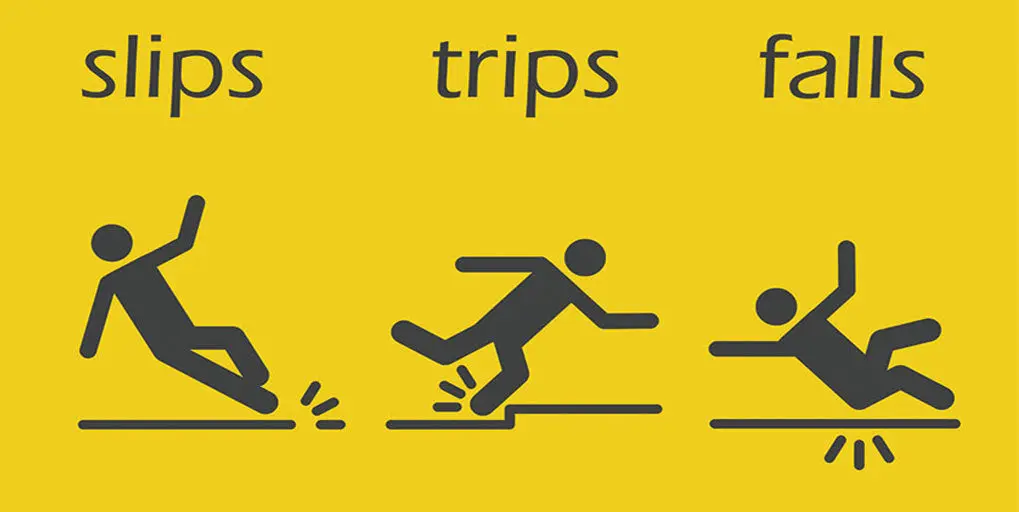
Properties
As winter approaches, council properties face the heightened risk of slip and fall accidents due to snow and ice accumulation. These incidents can lead to severe injuries, legal liabilities, and increased insurance costs. Therefore, it is essential to implement effective strategies to prevent accidents on your council’s properties during the colder months. Here are some practical measures that can help ensure safety.
Regular Snow and Ice Removal
The most critical step in preventing slip and fall accidents is prompt and thorough snow and ice removal. Develop a snow removal plan that includes regular clearing of walkways, driveways, and parking areas. Utilize snow shovels, plows, or hire professional services to ensure all surfaces are clear of snow and ice as soon as possible after a storm.
Use of De-icing Agents
Applying de-icing agents, such as salt or calcium chloride, can significantly reduce ice formation on walkways and steps. Property owners should stockpile these materials and apply them liberally on high-traffic areas, particularly in the early stages of winter when the risk of freezing rain is high. Be mindful of the environmental impact and choose eco-friendly alternatives when possible.
Clear Signage and Warnings
Visibility is crucial during winter months. Use clear signage to warn visitors and tenants about potential icy conditions, especially in areas prone to freezing. Signs should be well-placed, easily readable, and reflect current weather conditions. This proactive approach can alert Scouts and Scouters to tread carefully and stay vigilant.
Improve Outdoor Lighting
During winter, daylight hours are limited, making good outdoor lighting essential. Ensure that all walkways, entrances, and parking areas are well-lit to help individuals see any potential hazards. Motion-sensor lights can provide added safety by illuminating areas when people approach, reducing the risk of accidents in dimly lit spaces.
Maintain Safe Walkways
Regularly inspect and maintain all walkways and outdoor steps to ensure they are in good condition. Look for cracks, uneven surfaces, or any other hazards that could contribute to falls. Repairing these issues promptly will enhance safety and reduce liability concerns during the winter months.
Encourage Safe Practices
Promoting safe practices can greatly reduce the risk of slip and fall accidents. Consider delivering a safety moment prior to activities, meetings, training sessions or other Scouting related gatherings. What is a safety moment you ask? Safety moments are a crucial component of Scouting America’s Culture of Safety, underscoring our commitment to identifying, preventing, or mitigating hazards and risks in all Scouting activities. As with other safety-conscious organizations, we initiate meetings and events with a brief pause to discuss potential dangers and how to avert them, focusing the group’s attention on safety protocols. For more information about delivering a safety moment, please review NCAP Recommended Practice 552 or visit the Scouting.org Safety Moments website.
Establish a Reporting System
Implement a clear reporting system for your property’s visitors to communicate hazardous conditions they may encounter. Providing a method for reporting slippery areas, damaged walkways, or insufficient lighting can help you respond promptly to emerging risks. This not only enhances safety but also fosters a culture of vigilance within your property.
Regular Hazard Analysis
Conduct regular safety audits of your properties during the winter months. This proactive approach allows you to identify and address potential hazards before they lead to accidents. Consider involving a third-party safety consultant for an unbiased evaluation, ensuring that all safety measures are adequately implemented and effective. Councils should consult the Enterprise Risk Management Committee Guidebook for guidance about creating a culture of risk mitigation.
Prepare for Emergencies
Even with the best precautions, accidents can still happen. Prepare for emergencies by having first aid kits readily available and ensuring that Scouts and Scouters know how to respond to slip and fall incidents. Keeping contact information for medical services and legal support accessible can streamline the response in case of an emergency.
By taking these proactive measures, property owners can significantly reduce the risk of slip and fall accidents during the winter months. Prioritizing safety not only protects individuals on your property but also safeguards financial interests and enhances the council’s reputation as a responsible property owner.
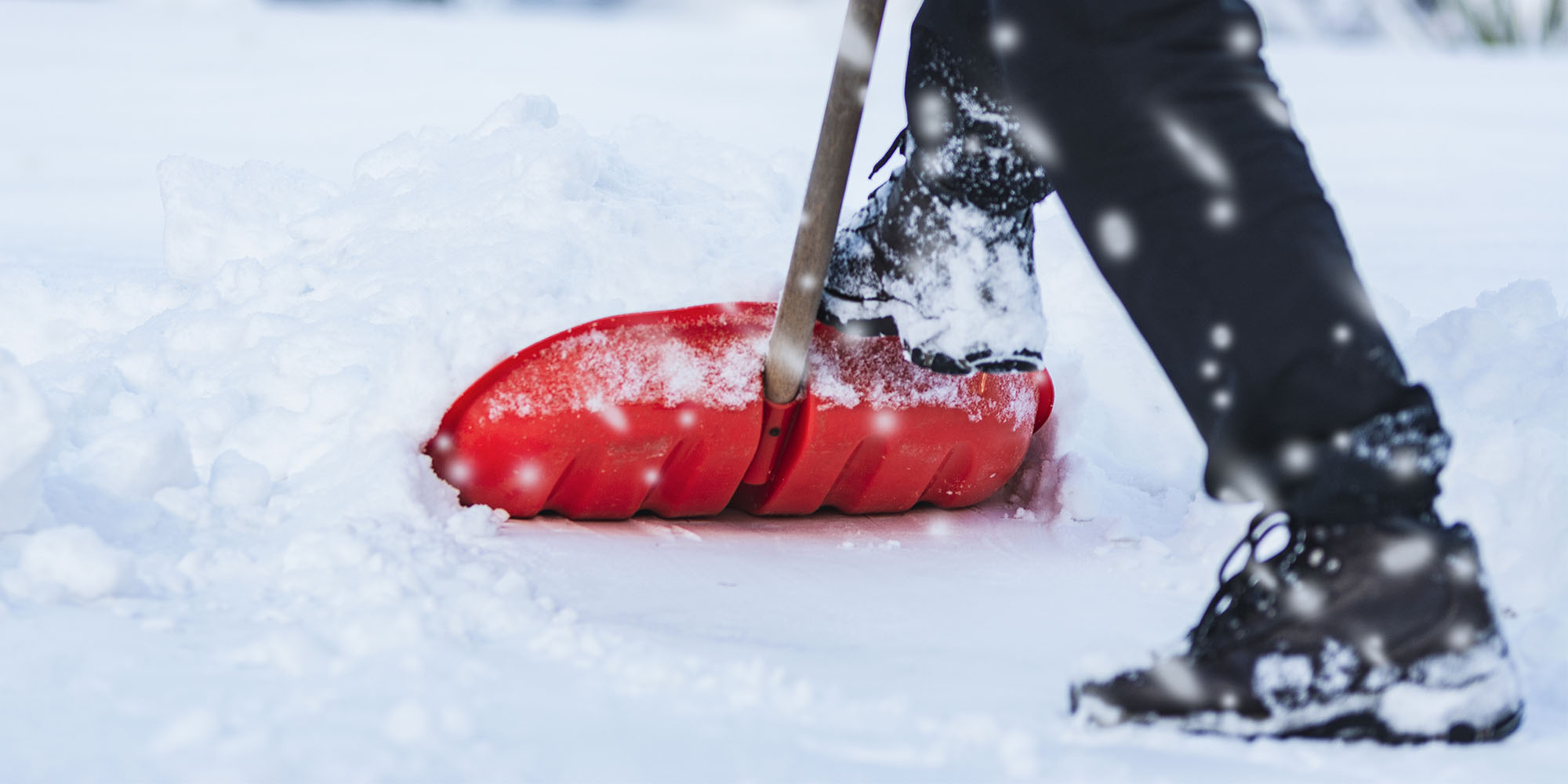
Properties
Winter is here and our driveways, sidewalks, and council properties are going to get covered in snow. Removal is a dreaded chore that needs to be planned out ahead of time. Snow shoveling can be a very dangerous task if not handled correctly.
Here are some fast and easy ways to stay safe this winter:
Warm Up. Yes, just like in gym class back in middle school warming up and doing stretching exercises will help from getting injured. Even just bending from side to side will help get you ready for the snow.
PUSH rather than lift. Lifting snow can be very strenuous. If you do lift the snow, make sure you lift with your legs and bend your knees.
A good shovel. Ergonomic shovels take the load off the back and keep your body from moving in positions where injuries can occur. Even better, use snow scoops instead of conventional shovels. Your back will love you for not having to do all that lifting.
Take a break. Only shovel for 20 to 30 minutes at a time. Take a break, have a nice warm cup of Hot Chocolate in between. Fresh wet snow can be extremely hard on your body so pace yourself. Overdoing it can lead to an increased risk of heart attack. According to the American Heart Association, even walking through heavy, wet snow can place strain on your heart. See this related article from the American Heart Association.
Wear Layers. Just like we learned in Scouting for winter weather. Layers are the way to maintain proper body temperature. Overheating can be a problem so keep it loose and take layers off as needed.
Stay Hydrated. Drink plenty of water to stay hydrated while moving snow.
Remember, winter is a time of year when a majority of us are less active so injuries can occur when we least expect them. Once you have finished that sidewalk clearing, drop a little ice melt down so you or a camper don’t slip and fall on your freshly cleaned area. Nobody wants their holidays ruined with a broken ankle or messed up back. So, stay safe and have a wonderful winter season.
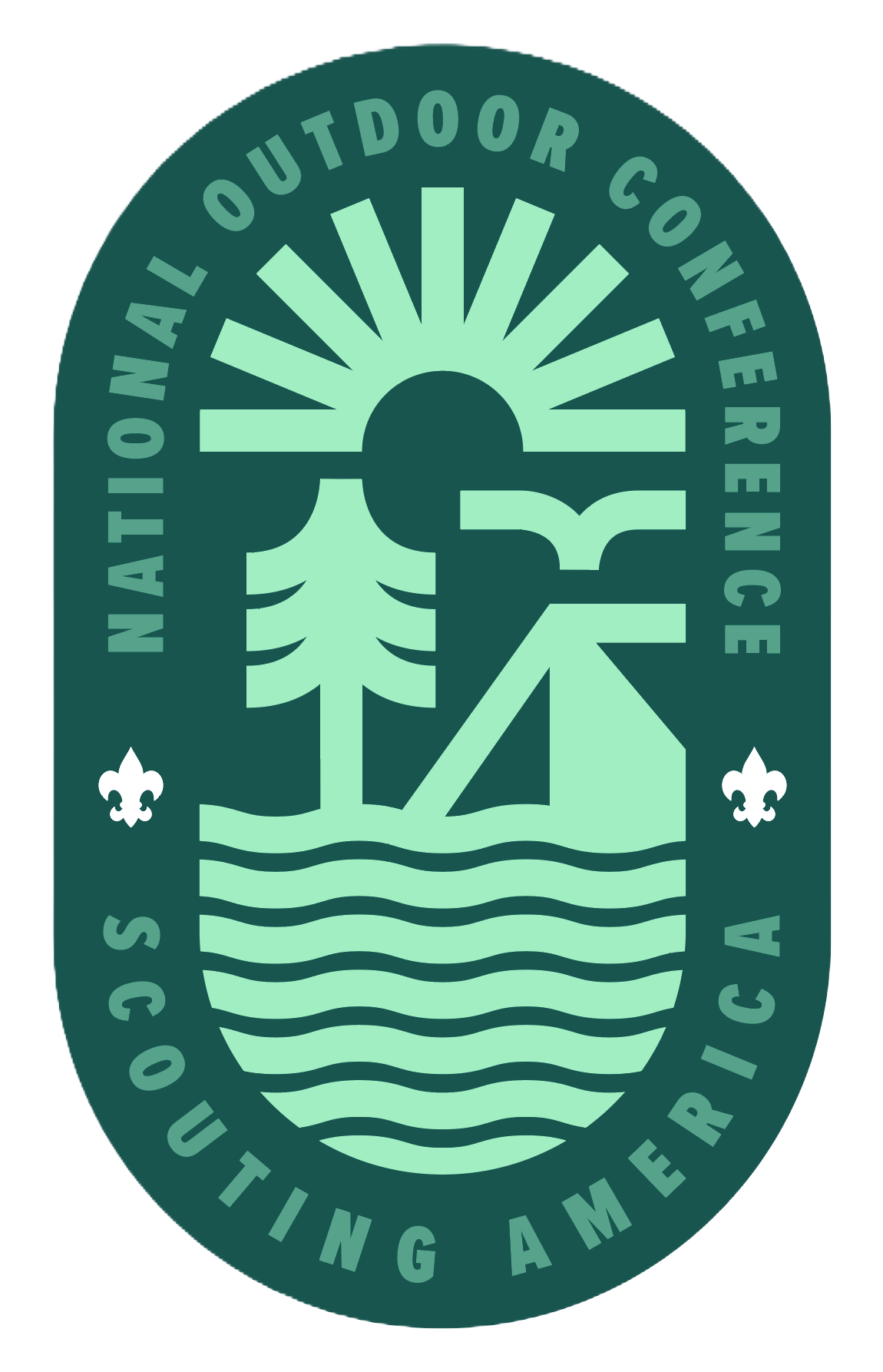
Camping
Join us in the heart of the rugged Southwest at Philmont for the 2025 National Outdoor Conference—the ultimate gathering for Scouters and outdoor enthusiasts! Whether you’re looking to level up your skills, get inspired by top speakers, or simply connect with like-minded adventurers, this biennial event is the place to be.
Where: 📍 Philmont Training Center, Cimarron, NM
When: 📅 September 17-21, 2025
🌟 Conference Highlights:
- Dynamic workshops and hands-on training to elevate your outdoor programs
- Inspiring keynotes from leaders in the outdoor industry
- Networking opportunities with Scouters and outdoor pros from across the country
- A firsthand look at the latest in gear, gadgets, and innovations
Don’t miss this chance to discover new ideas, sharpen your skills, and share in the excitement of the great outdoors with fellow Scouters. Stay tuned for updates on registration, class offerings, lodging, and more!
Be sure to sign up on the 2025 National Outdoor Conference website to receive email alerts—let the countdown to adventure begin!
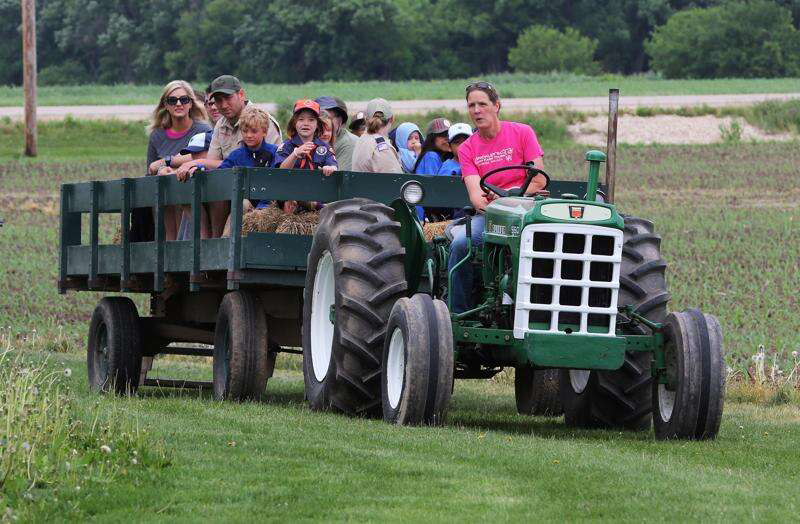
Safety
As the weather begins to cool and the season changes, now is the time that many of our units and councils are looking toward the holiday season and fall festivals. Many of these events include parades and hayrides or wagon rides. While these events are approved for Scouts of all ages there are a few things you need to remember in planning and executing a parade or hayride as a part of your camp or unit program.
In most circumstances the transportation of passengers in the back of a pickup truck or on a trailer is prohibited. The Guide to Safe Scouting specifically discusses the exception for hayrides and parades. (see Guide to Safe Scouting – Parade Floats and Hayrides)
So let’s start with a few SAFE tips for hayrides and parades:
Supervision: Active adult supervision is required for all Scouting activities, but especially ones where vehicles are involved. It’s a good idea to have leaders spread throughout your trailer, wagon, or truck bed near the open areas (like the access to the trailer, wagon or tailgate) to help with any unexpected bumps.
Assessment: Ensure that everyone is safe in the trailer or truck bed and that you are following the instructions listed in the Guide to Safe Scouting.
- Transportation to and from the parade or hayride site is not allowed on the truck or trailer.
- Those persons riding, whether seated or standing, must be able to hold on to something stationary.
- Legs must not hang over the side.
- Flashing lights must illuminate a vehicle used for a hayride after dark, or the vehicle must be followed by a vehicle with flashing lights.
Fitness and Skill: This involves not only the participants but the driver as well. All drivers of the tow vehicle need to be familiar with the proper procedures for towing vehicles. Additional training may be involved if the tow vehicle is a tractor or other farm type equipment.
Ensure all youth and adults who are participating in parades (especially if walking) are fit enough for the parade route. Many parades have elevation changes and some are lengthy so a health evaluation is important before you begin.
Equipment and Environment: Look at the equipment you are using for your hayride or parade and ensure that it meets the requirements for Scouts.
- Make sure no one can hang their legs over the side.
- Ensure that there is something stationary for everyone to hold onto even if seated.
- Keep an eye out for weather as the fall season changes rapidly. Make alternate plans if there is inclement weather forecast.
- Ensure that the trailer is properly secured to the tow vehicle. This could include proper sized tow hitch, chains and other safety measures.
- Ensure all participants are dressed properly for the weather and activity. If you are walking in the parade ensure that Scouts and leaders have water and proper footwear for the parade route.
Hayrides and parades are meant to be fun, but we, as leaders, must ensure they are safe, too. By following the Guide to Safe Scouting, you can make sure your Scouts are having the time of their lives, whether they’re waving to the community from a parade float or enjoying a hayride through a fall festival.
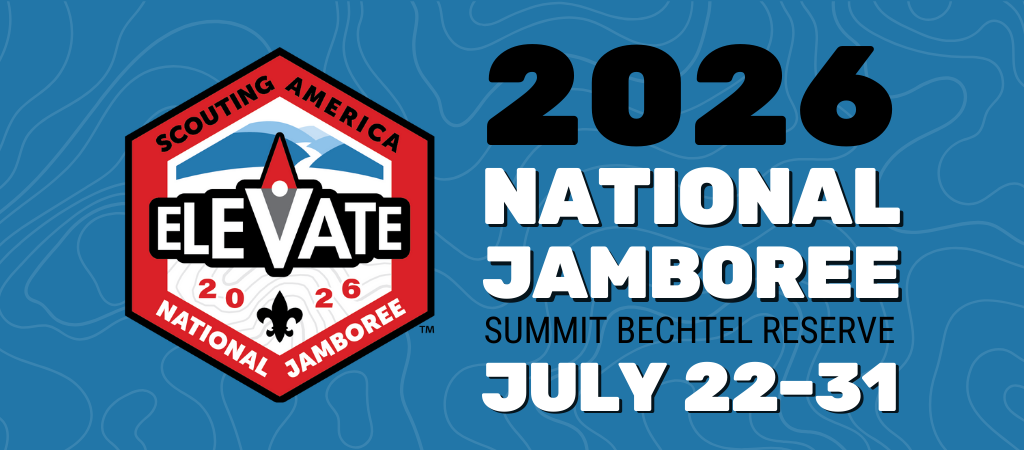
National Jamboree
The National Jamboree is Scouting’s premiere event, bringing together thousands of Scouts and leaders from across the country. If you’ve ever attended a Jamboree, or just hear others talk about it around the campfire, you know it’s a life-changing experience. And we need you to be a part of the staff who make it happen! Serving on the Jamboree staff is an opportunity for Scouts and Scouters aged 16 and up to “Elevate” Scouting for all of those in attendance. Let me give you the top 10 reasons to “Elevate” your Scouting by becoming a Jamboree staff member:
1. The biggest Scouting event of the year
The National Jamboree is like building our own Scouting city, requiring thousands of dedicated volunteers to make it run smoothly. By serving on staff, you’re helping to create lifelong memories for tens of thousands of Scouts, leaders and visitors. Your contribution, no matter the role, is crucial to the success of the Jamboree. You’ll leave knowing you helped to Elevate Scouting’s future.
2. Leadership opportunities
One of the aims of Scouting is leadership development. This is not just for the youth. Jamboree staff positions are leadership development opportunities unlike any other. Whether you’re leading a group of volunteers while running an activity area, or providing behind-the-scenes support, you’ll hone valuable skills such as teamwork, problem-solving, and communication. These experiences not only strengthen your Scouting resume but also give you skills that are transferable to work, school, and other aspects of life.
3. Lifelong friends!
The friendships you form as a Jamboree staffer are one of the main reasons that people return each Jamboree. You’ll work alongside volunteers from all over the country, people who share your passion for Scouting. The bonds you create while working, learning, and having fun together will last a lifetime. You’ll also meet Scouts and leaders from around the world, expanding your Scouting network in ways you never thought possible.
4. Personal growth
Serving on Jamboree staff pushes you out of your comfort zone in the best way possible. You’ll be challenged with new responsibilities, often in fast-paced environments, giving you the chance to grow as an individual. Whether you’re 16 or 60, Jamboree staff service helps you discover new strengths and passions. It’s an experience that will Elevate you personally and that will stay with you long after the Jamboree ends.
5. Staff perks
Being a staff member has its perks! You’ll have access to special staff only areas, receive unique staff swag, and have opportunities to participate in staff-only activities. Plus, being on staff allows you to experience the Jamboree from a behind-the-scenes perspective, offering an entirely different view. From the early staff arrival days to the closing show, your time on staff is filled with exciting, exclusive experiences.
6. Elevate Scouting for the next generation
One of the most meaningful aspects of serving on Jamboree staff is the chance to Elevate Scouting for the next generation of Scouts. The Jamboree is often a life-changing experience for many young Scouts. As a staff member, you play a pivotal role in making that happen. Whether you’re helping a Scout conquer a new activity, teaching a new skill, or simply offering encouragement, you’re shaping the Scouting journey for thousands of youth. Your influence can last long after the event.
7. A chance to give back
For those who’ve benefited from Scouting, serving on Jamboree staff is a powerful way to give back to the program that’s given you so much. It’s an opportunity to invest your time, talent, and passion into an event that strengthens Scouting across the nation. Whether you’ve been involved in Scouting for decades or are relatively new, your service helps ensure that the values of Scouting continue to thrive.
8. FUN!
While there’s plenty of hard work involved, serving on staff is also about having fun. The Jamboree experience is full of adventure. You’ll have a front-row seat to some of the coolest activities and events happening at the Jamboree, the excitement is contagious. Many staffers say they return for friendships and the fun as much as the work itself.
9. Professional experience
Especially if you are a young person or young professional, Jamboree will help you to build your network across the country. You can choose to work in any field of the Jamboree that interests you and will have a chance to meet others who share that same passion. Staff members in the past have used the Jamboree to make connections to help further their professional careers as well. Use the Jamboree as a chance to Elevate your resume not only in Scouting but in connections with other professionals.
10. Be a part of the first Scouting America Jamboree
The Jamboree has been around since 1937 and thousands of Scouts have attended Jamborees and served on the staff. But this Jamboree will be the first for Scouting America. You can’t say you have been to every Scouting America Jamboree if you miss the first one! Even more, you can’t say you have staffed every Scouting America Jamboree unless you staff the first one.
10 1/2. Celebrate America
I know I said top ten, but the Jamboree experience can’t be contained in just 10…So…
Speaking of America, 2026 also marks the 250th anniversary of the USA and we will have a chance to celebrate that milestone as well during the Jamboree. Our Americana Extravaganza will give you an opportunity to celebrate citizenship and celebrate our country in some unique ways as a part of the largest gathering of Scouters. You don’t want to miss it.
So how do you sign up?
Watch the Jamboree website www.jamboree.scouting.org for the latest information. This is also the place where you will find the Jamboree registration link coming this fall. With a variety of roles available, from program areas to logistics, there’s a place for everyone, regardless of your skills or experience level.
Serving on the National Jamboree staff is a rewarding, unforgettable experience. You’ll find value in the friendships, skills, and personal growth that come with being part of the Jamboree staff team. Not only will you help Elevate the experience for thousands of Scouts, but you’ll also walk away with memories that will last a lifetime.
Are you ready to make a difference and be part of Scouting history? Join the Jamboree staff and embark on an adventure like no other!
For more information on the Jamboree staff be sure to check out the Jamboree staff webinar from September 2024 at https://jamboree.scouting.org/councils/jamboree-informational-webinars/

Properties
Scouting America properties rely on chain saws to help clear trails, remove deadfalls, clear timber, and stockpile wood for campfires and heating buildings. To allow for this use, specific guidelines for safety have been adapted for use at all Scouting America activities.
National Camp Accreditation Program Standard FA-712 requires that any person who operates a chain saw be approved by the council designee. In addition, chain saw operators must be at least 21 years old and meet one of the following requirements: be a professional forester with current credentials and liability insurance; be a certified arborist with credentials; have written documentation of training in chain saw techniques from either (1) a state or federally recognized chain saw training course approved by the council or (2) the BSA Chain Saw Basic Training Course (Training Code S59). NOTE: If you choose Chain Saw Basic, the facilitators for this course must be experienced chainsaw operators AND be approved by your local council Scout Executive or designee. Reminder, effective September 1, 2021, the BSA Chain Saw Basic Training Course is good for five years. Those completing the course prior to September 1, 2021, will be considered trained until September 1, 2026.
LET’S LOOK AT ACTUAL SAFETY STEPS AND OPERATION:
Before Starting a Chain Saw
- Check controls, chain tension, and all bolts and handles to ensure that they are functioning properly and that all are adjusted according to the manufacturer’s instructions.
- Always make sure that the chain is sharp, and the lubrication reservoir is full.
- Start the saw on the ground or on another firm support. Drop-starting, or the act of pushing the saw away from the body with one hand while simultaneously pulling on the starter cord handle with another, is never allowed.
- Start the saw at least 10 feet from the fueling area, with the chain’s brake engaged.
Fueling a Chain Saw
- Use approved containers for transporting fuel to the saw.
- Dispense fuel at least 10 feet away from any sources of ignition when performing construction activities. No smoking during fueling.
- Use a funnel or a flexible hose when pouring fuel into the saw.
- Before refueling, turn off the chain saw and let the motor cool down. Never attempt to fuel a running or HOT saw.
Operating a Chain Saw Safely
- Clear away dirt, debris, small tree limbs, and rocks from the saw’s chain path. Look for nails, spikes, or other metal in the tree before cutting.
- Always have a spotter on hand—someone who can watch for safety hazards while you cut.
- Shut off the saw or engage its chain brake when carrying the saw on rough or uneven terrain.
- Keep your hands on the saw’s handles and maintain secure footing while operating the saw.
- Proper personal protective equipment must be worn when operating the saw, which includes hand, foot, leg, eye, face, hearing, and head protection.
- Do not wear loose-fitting clothing.
- Be careful that the trunk or tree limbs will not bind against the saw.
- Watch for branches under tension. They may spring out when cut.
- Gasoline-powered chain saws must be equipped with a protective device that minimizes chain saw kickback.
- Be cautious of saw kickback. To avoid kickback, do not saw with the tip. If equipped with a tip guard, keep it in place.
- Have an appropriate first-aid kit within easy access.
RESOURCES
- Guide to Safe Scouting
- Person Protective Equipment: https://filestore.scouting.org/filestore/healthsafety/pdf/680-028.pdf
- Chain Saws Safety Moment: https://www.scouting.org/health-and-safety/safety-moments/chain-saws/
- BSA Scouting Safely Checklist: https://www.scouting.org/health-and-safety/safe/
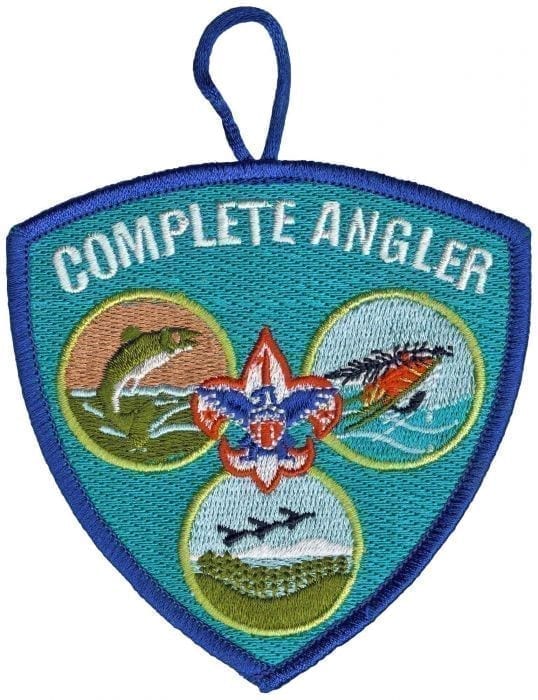
Fishing
The Scouting America Complete Angler Award honors Scouts who earn all three fishing-related merit badges: Fishing, Fly-Fishing, and Fish & Wildlife Management.
Fishing Merit Badge was one of the original merit badges and over two million have earned it. In a recent Boys’ Life survey, fishing placed 4th overall as the preferred outdoor activity, surpassed only by camping, swimming and bicycling. What better way to keep older Scouts involved than by expanding on this trend.
After completing the Complete Angler Recognition, these older Scouts can become mentors for younger Scouts, sharing their knowledge and helping others to enjoy a positive fishing experience.
To become eligible for the award, earn these three merit badges: Fishing, Fly-Fishing, and Fish and Wildlife Management.
Then complete one or more of the following projects:
- Teach a Fishing or Fly-Fishing merit badge skill to your troop, crew or team as part of a unit program activity.
- Help instruct Cub Scouts on fishing skills or fishery management as part of a Cub Scout meeting or outing.
- Participate in a local fishing derby or tournament, either a Scouting or Community event.
- Complete a conservation project that will benefit a local fishery.
Upon completion, this recognition is available for order at your local Scout shop.
Resources:
Complete Angler Recognition Form
https://filestore.scouting.org/filestore/Outdoor%20Program/pdf/Complete_Angler_Recognition.pdf
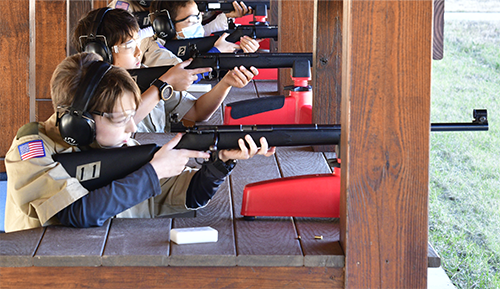
Range & Target Activities
The Range and Target Activities (Shooting Sports) currently offered by Scouting America are highly complex, requiring knowledgeable supervision, qualified instruction, and strict adherence to standard operating procedures. The following Q&A reviews upcoming September 1st program adjustments that aim to simplify these programs while ensuring safety standards are met. Prior to reviewing these FAQs, please review the upcoming changes listed HERE in the Guide to Safe Scouting.
Q: Why are range and target activities (shooting sports) part of Scouting’s programs?
A: Range and target activities provide Scouting the opportunity to instruct critical safe firearm handling to all age groups while also providing an opportunity for a Scout to learn self-discipline, concentration, mental discipline, self-reliance, self-esteem, problem-solving and responsibility. Teaching safe firearm handling includes conversations such as “What happens when you see a gun? Never touch the gun, leave it where it is, and tell an adult right away.” Scouting is committed to teaching youth how to be safe around firearms, whether at home, in their neighborhoods, or around the community.
Q: Why is Scouting updating its range and target activities (shooting sports programs) effective 9/1/2024?
A: With a focus on safety and delivery of a quality program, these program adjustments aim to simplify and further standardize range and target activities, thus enhancing the overall experience for Scouts and Scouters alike.
Q: Why is the name of shooting sports programs changing to Range & Target Activities?
A: This new name reflects both where these activities take place (on established ranges) and what these activities are.
Q: Starting in September, besides a nationally authorized camp property’s range, Scouts can participate in firearms programs on a commercial range. How will the BSA define a commercial firearm range?
A: A commercial firearm range is a supervised facility that offers a controlled environment for safe firearm practice. It will provide shooting lanes, targets, and may offer equipment rentals and training in safe firearm handling and marksmanship. Standard operating procedures are required for each firearm type used on-site. Scouting’s range and target activities must follow all of Scouting’s range and target activities policies or range standard operating procedures that are equivalently stringent, including no variation from Scouting’s limitations on firearms used. These ranges may be operated by a licensed business, a government entity or non-profit.
Q: And also, what is a nationally authorized camp property?
A: A national authorized camp property is defined by the National Camp Accreditation Program standards in SA-001. This definition is “A camp property includes any property over which a BSA council exercises long-term control that is made available to BSA units or individuals for use in BSA-branded program activities.” For full information on what is a nationally authorized camp property, please review the entire NCAP standard SA-001.
Q: My Scouts BSA troop wants to conduct a weekend activity focused on the Rifle Shooting merit badge, can we still host this event after September 1, 2024?
A: Yes. Scouts BSA troops can offer these activities with the required supervision certifications indicated in the BSA Shooting Sports Manual at either a nationally authorized camp property range(s) or at a commercial firearm range. Reminder- your unit must also have someone who has completed the online Range Activity SAFEty training. This trained adult leader must be present at the range. Note this training does not replace the requirements for certified NRA firearms instructors and range safety officers. This training will be available beginning 9/1/2024.
Q: There is a new Range Activity SAFEty training??
A: Yes. On September 1, 2024 this training will be available for unit leaders to take on My.Scouting (the same place you can take Youth Protection training online etc). Less than 40 minutes, this online training will help Scout leaders be prepared to successfully offer these programs at the unit level.
Q: Our Venturing crew is interested in participating in a pistol program. Is it still possible for us to do so?
A: Yes, Venturing crews participate in the NRA FIRST Steps Pistol Orientation at an accredited camp program (day camp, short-term camp, long-term camp) or a council organized one day event. Reminder, effective 9/1/2024, unit-level sponsored/planned Venturing and Sea Scouting pistol programs are prohibited. This program will also be available for older Scouts BSA youth.
Q: How does Scouting define “firearm”?
A: Firearms include pellet rifles, airsoft (any type), rifles, pistols, shotguns, and muzzle loading rifles and shotguns. While Scouting does not define a BB gun or “BB device” as a firearm, some states, counties, or jurisdictions may regulate BB guns as firearms, depending on their design and capabilities. Councils must review and follow any local regulations before conducting programs.
If planning an upcoming event or outing for your unit or council involving range & target activities, please remember to visit Scouting.org on September 1st to review the new National Range & Target Activities Manual and any revisions to the Guide to Safe Scouting.
Still have questions? We invite you to watch a recording of our Range and Target Activities Program Updates (a Venturing focus but all levels are reviewed) webinar that premiered on July 10. You may also attend an additional, Outdoor Program & Properties Team sponsored, webinar on August 15th. The links for both the recording and to register for the upcoming webinar may be found below.
Resources:
- Range & Target Activities Program Updates Discussion and Q&A Registration Link (August 15th Live Webinar)
https://scouting-org.zoom.us/meeting/register/tZEqce2orDotHN378fJ0lxBhit6kJGubesBC
- Range & Target Activities Program Updates Discussion and Q&A (July 10th Recording)
https://scouting-org.zoom.us/rec/share/c7osEzaX53o6tKTSRCcnbDVNmBbhK_19JcNVtbw091wDjMLf2G6ptuMz2-f5FYr8.BiklBNvgl4QfQPM9
- Guide to Safe Scouting (Online Edition)
https://www.scouting.org/health-and-safety/gss/toc/
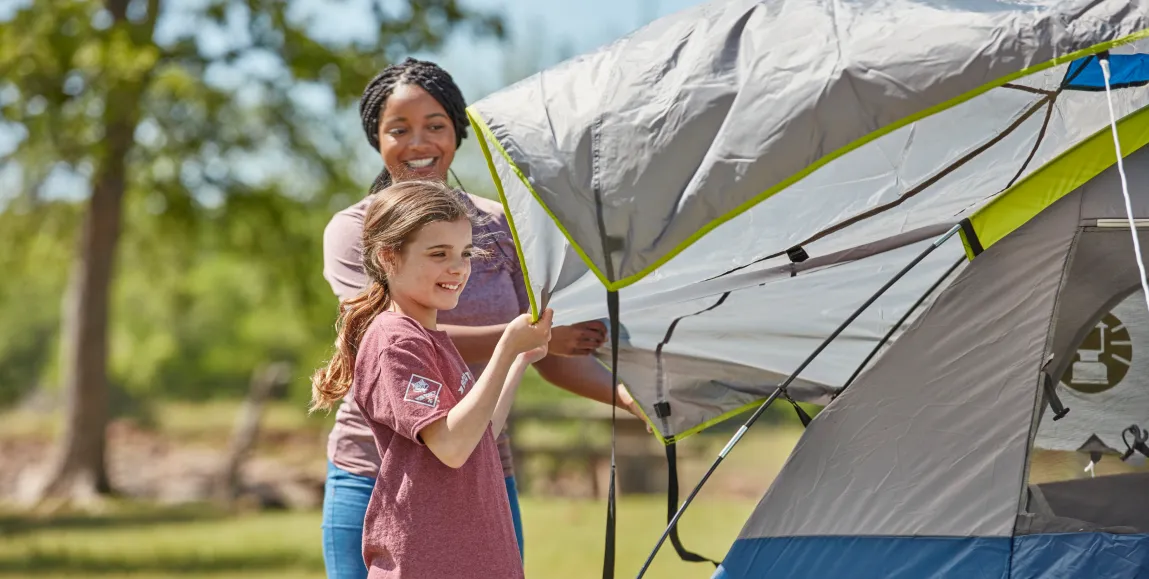
Camping
On June 1st, Cub Scouting unveiled eagerly awaited updates, bringing new energy and opportunities for Cub Scouts to explore the great outdoors. The updated Cub Scout program has a significant new number of outdoor focused adventures that can be a great addition to your district or council event.
Several updates were made to the camping required and elective adventures that Cub Scouts at all ranks can participate in. The opportunity to camp outdoors has consistently been the number one reason Cub Scouts join the Scouting program! The updated Cub Scout program continues to offer camping at every rank. So first, how can you assist packs in earning these new adventures?
- Ensure packs know their Cub Scouts may be eligible for the summertime elective adventure. Like the previous “Summertime Pack Award”, these new “Summertime Fun” elective adventures encourage a Cub Scout to participate in an activity each month of the summer. Each Scout can earn the elective based on their individual participation. (Reminder Lion Scouts did not join until kindergarten started this fall so incoming kindergarten Lion Scouts cannot earn this elective adventure until the conclusion of their kindergarten school year.) Touch base with your packs this fall and see if they have Scouts who earned this elective!
- Host a family camp weekend for your district or council. Reminder these events are “short-term camps” and must operate under the National Camp Accreditation Program (NCAP) standards. This will help packs have a successful camping experience by leveraging your council property and experience program staff and volunteers.
- Facilitate BALOO training courses. A new syllabus will launch in September – take advantage of this updated material to encourage more Cub Scout leaders to experience this hands-on training.
In addition to program changes, several updates were made to the Guide to Safe Scouting regarding Cub Scout camping. These changes specifically impact Webelos (4th grade) and Arrow of Light Scouts (5th grade) dens. The complete policy (including details like required BALOO training etc) can be viewed online HERE but below are a few key parts:
- Effective June 1, 2024, Webelos is the designated program for 4th graders and Arrow of Light is the designated program for 5th graders. As such, the Arrow of Light program is no longer combined with the Webelos program and the purpose of Webelos (4th grade) is no longer to prepare Cub Scouts to join Scouts BSA. The purpose of the Arrow of Light program is to prepare for Arrow of Light Scouts to join a Scouts BSA troop. Therefore, the camping policies for these two age groups have officially been separated. Understanding that these two dens have officially separated is critical to determining how each den can camp and with whom. This separation will also be showcased on the upcoming update to the Age Appropriate Guidelines Chart.
- Both Webelos and Arrow of Light dens can still camp as a den. Reminder, only these two den types can camp as dens (other Cub Scout ranks can camp as part of a pack coordinated or at a council/district camping event). Webelos and Arrow of Light den campouts are for these two ranks alone – “tagalong” other age Cub Scouts or siblings are not allowed on den campouts.
- Webelos can camp as a den or with their pack but cannot camp with a Scouts BSA troop either at a troop or district/council event. This opportunity will become available when they become Arrow of Light Scouts and is even part of one of the required Arrow of Light adventures.
- Be sure to consider this as you plan legacy camporees or other Scouts BSA events where you may have invited all “Webelos” – now these camporees or other Scouts BSA events are no longer for Webelos but exclusively a potential opportunity for Arrow of Light Scouts.
- Arrow of Light Scouts can participate and camp at a unit coordinated campout with a Scouts BSA troop they are eligible to join. They must attend as an Arrow of Light den/patrol under the supervision of two deep leadership from their Arrow of Light den/patrol or pack.
- Arrow of Light Scouts can also participate at a Scouts BSA “camporee” (council coordinated, short-term camp, see NCAP SA-001) during the day and/or overnight as either a member of their den (with the den’s two deep leadership) or with their parent(s) or legal guardian(s) if the local council coordinates two deep leadership per NCAP Standard HS-502.
Be sure to read the entire section in the Guide to Safe Scouting so you can help your Cub Scout packs and their older dens have a successful camping experience this fall and into next year. The newly updated Cub Scout program is a great way to engage more Scouts outdoors! Don’t miss the chance to incorporate camping into your year-round district/council events. Questions,
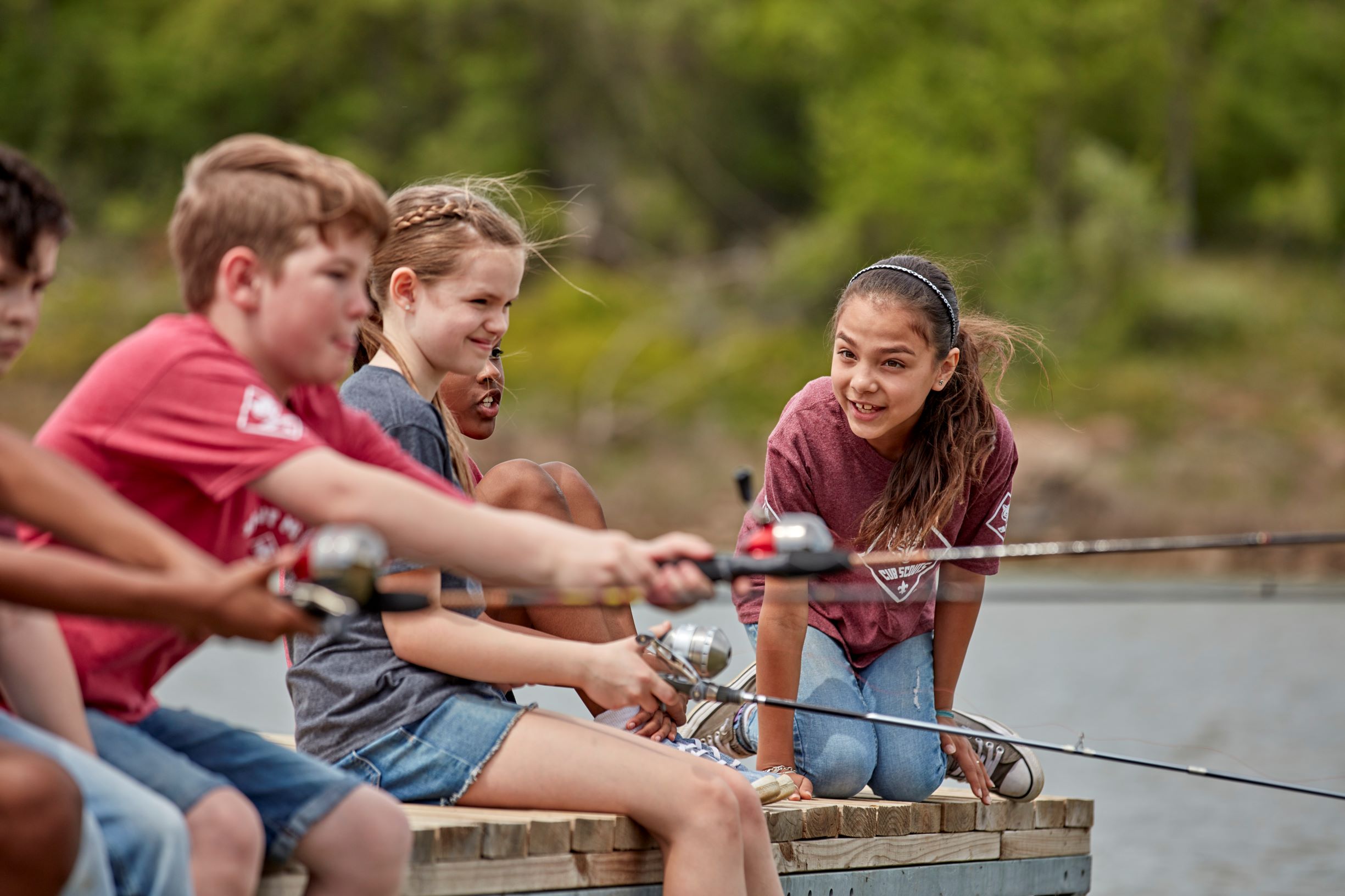
Fishing
Great news for Cub Scouts, as of June 1, 2024, there is a fishing adventure in every Cub Scout rank! Lion Scouts up to Arrow of Light Scouts can earn fishing elective adventures as they progressively learn how to become an accomplished angler. Fishing holds a special place in Scouting history, being one of the original merit badges, and recent surveys have consistently ranked it as one of the top outdoor activities. It’s no wonder that fishing serves as a fantastic recruiting tool for new Scouts and families alike. Fishing also retains Cub Scouts in the program because it is fun, builds useful skills and challenges them on so many levels. Moreover, fishing isn’t just a temporary activity; it’s a lifelong pursuit that Cub Scouts and their families can continue to enjoy together. Furthermore, fishing has the power to reignite the passion of those who may have drifted away from Scouting, as it fosters a sense of community within packs, where knowledge and skills are shared and passed down through generations, much like cherished traditions.
How does it work?
Each rank has specific requirements for fishing elective adventures. In addition, there are den leader resources on for each rank that will outline the basic requirements for earning the fishing elective adventures available on Scouting.org that will launch on June 1, 2024. These requirements emphasize fishing safety and basic fishing knowledge such as fish identification, fishing equipment, biology, casting skills and knots. The adventure always has a fun trip to go fishing with their pack and adult leaders.
How do Cub Scout leaders make it successful?
Fortunately, the BSA Certified Angler Instructor Working Group has been preparing for this for several years. They have created an extensive network of more than 2,000 Certified Angling Instructors (CAI) and Angling Educators (AE) to assist councils with their fishing programs. CAIs and AEs can teach fishing basics to parents and Cub Scout leaders and help them create successful fishing outings and provide fun programs. Leaders are encouraged to contact their local council fishing committee, sign up for an Angling Educator Class, or visit BSA Fishing for more information about Scouting’s Cub Scout fishing resources.
Fishing is more than fun!
The bottom-line is that fishing is a family-friendly, safe, and fun hands-on activity that is an excellent addition to Cub Scout pack programming. It is inexpensive to start a fishing program and teaches Scouts hand-eye coordination, cooperation, team skills, goal setting, environmental awareness, patience, outdoor survival, persistence, problem solving, friendly competition and at the end of the day … storytelling. Help a Scout tell a great fish tale by taking them on a fishing adventure!

Properties
After months and months of juggling maintenance projects, capital improvements and year-round camp visitors, summer camp is just days or weeks away! For our camp rangers and maintenance teams, maintaining camp during the summer camp season can be complex! With new and returning camp staff, hundreds of weekly visitors, and the inevitable breakdown of some piece of equipment, it can be stressful to keep camp “day 1” ready every day.
Here are a few suggestions of how you can leverage your summer camp staff to help them help you!
- Provide resources. Working alongside the camp director, ensure that camp staff understand what a clean, safe and hazard free environment looks like in their specific area and then provide camp staff with cleaning supplies and basic supplies to help you help them keep their respective areas clean and hazard free.
- Regular Inspections. Camp staff can conduct routine inspections of camp facilities, equipment, and grounds. See something? Say Something! They should report any issues, such as damaged buildings, broken equipment, or hazardous conditions, to the maintenance team promptly. This proactive approach can help prevent minor issues from becoming major problems. Make regular inspections a part of their daily camp routine in their assigned areas.
- Have a specific process to notify you when something needs maintenance and communicate it to camp staff. Is this via paper? Via FIIX or other CMMS software? Online? Via text? The easier the process, the more likely you will know when something needs immediate repair. Share a sample of a “work order” that meets your expectations so camp staff know what will best help them help you help them when they submit a work order.
- Promote a Culture of Care: Camp staff can help promote a culture of care and respect for camp facilities among campers and visitors. Encouraging campers to clean up after themselves, use facilities properly, and report any damage they notice can help prevent unnecessary wear and tear on camp facilities. By modeling this behavior as camp staff themselves, campers will also model this behavior.
By actively involving camp staff in camp maintenance efforts, camps can ensure that their facilities remain safe, functional, and enjoyable for all campers and visitors throughout the camp season.
Camping
As we gear up for another exciting summer season of Scouting adventures, I want to take a moment to express my heartfelt gratitude for the incredible work you do as camp leaders. Your dedication and commitment to providing quality programs that enrich the lives of our Scouts do not go unnoticed.
The mission of the Boy Scouts of America comes to life at the camps you serve! Summer camp holds a special place in the heart of every Scout. It is a time of growth, learning, and camaraderie. Each year, Scouts eagerly anticipate the opportunity to attend camp, where they can participate in a variety of activities that challenge them, teach them new skills, and help them forge lifelong friendships. Many of them stay active in Scouting because of the experience they have in your camps!
“Summer camp is a time-honored tradition that provides Scouts with the opportunity to learn new skills, build confidence, and create lasting memories,” says Roger Krone, CEO of the Boy Scouts of America. “I want to extend a sincere thank you to all camp leadership for your tireless efforts in making these experiences possible for our youth.”
With this excitement comes a great responsibility. In Scouting, we will not compromise the safety of our youth, volunteers, and employees. Safety is a value that must be taught and reinforced at every opportunity. We are all responsible and must hold each other accountable to provide a safe environment for all participants. As camp leaders, you play a crucial role in ensuring that our camps are safe, inclusive, and welcoming environments for all Scouts.
I urge you to continue to uphold the highest standards of safety and quality in all aspects of your camp programs. Lean on the NCAP process, your camp staff and council leadership and your support system here at the National Service Center in Outdoor Programs and Properties. We are committed to your success and the success of your camping operation. Don’t forget to take care of yourself too. While my 15 years serving as a camp director were incredibly rewarding, it wasn’t without its long days and challenging moments. It’s crucial to take care of yourself so you can continue to be there for those who rely on you.
I remember my second summer serving as a council program director in the Inland Northwest Council. I was at Camp Grizzly outside Moscow Idaho, where we had a small lake. I tried to get around to all the program areas regularly and one Tuesday afternoon I was at the waterfront. Scouts were working on merit badges and enjoying the cool water. I noticed a group of Scouts near the dock, surrounding another Scout. As I got closer, I realized it was Kody, a Scout with cerebral palsy who was a camper that week. I stood back curious to see what was happening. I then witnessed for the next 40 minutes, Kody’s patrol swimming alongside him as he slowly worked to pass his swimmer test. I saw Scouts cheering him on from the dock and Scout swimming with him stroke for stroke. It was one of the most meaningful moments of my Scouting career so far. Those Scouts exhibited everything Scouting was about that day and 15 years later, I still remember this vivid experience.
I know this summer you will not only provide every Scout with a memorable and rewarding experience, but you will also help instill in them the values of Scouting that will guide them for the rest of their lives.
Thank you once again for your dedication and hard work. We look forward to another successful summer camp season under your leadership.
Yours in Scouting,
Andrea Watson
Director of Outdoor Programs and Properties
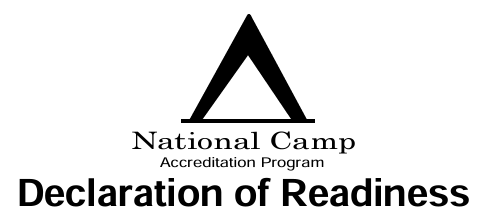
NCAP
The Boy Scouts of America National Camp Accreditation Program (NCAP) Declaration of Readiness (#430-072) is a critical step in ensuring that Scouting camps meet the highest standards of safety and quality. One of the key aspects of completing the Declaration of Readiness successfully is working effectively with your Zone Assessment Team. This article aims to provide guidance on how to collaborate with your team to streamline the process and navigate assessment efficiently.
Understanding the BSA NCAP Declaration of Readiness
The Declaration of Readiness (#430-072) is the Council’s assurance that a camp will be ready to open and prepared to offer a program that meets or exceeds the requirements of the NCAP standards and its Authorization to Operate. The Declaration of Readiness form with its supporting documentation must be submitted to your assigned NCAP Zone Assessment Team Leader no later than May 15 each year for long-term camps. The current version of the Declaration of Readiness (#430-072) can be downloaded from the BSA National Camp Accreditation Program site (scouting.org/ncap). One form is to be submitted for each type of long-term camp you will host (Cub Scout, Scouts BSA etc).
Collaborating with Your Zone Assessment Team
Establish Clear Communication Channels
Communication is key to a successful collaboration with your Zone Assessment Team. Establish clear communication channels early on, ensuring that all relevant stakeholders are) informed about the process and expectations. Regular meetings or conference calls can help keep everyone on the same page and address any questions or concerns that may arise. Share your communication preference and learn theirs – email, phone? Day of the week? Time of Day? Set communication up for success by confirming when and how is the best way to engage.
Assign Responsibilities
Clearly define roles and responsibilities within your camp team and the Zone Assessment Team. Identify who will be responsible for gathering documentation, conducting site inspections, and addressing any deficiencies found during the pre camp inspection. Having designated individuals for each task helps streamline the process and ensures accountability. This is a good way to engage your camp leadership team in the NCAP process, including helping gather the Declaration of Readiness documentation.
Provide Access to Necessary Information
Make sure your Zone Assessment Team has access to all relevant information and documentation needed to complete the assessment by submitting the documents indicated on the Declaration of Readiness form. The Declaration of Readiness form indicates what should be submitted to the Zone Assessment Team. Providing access to this information in advance allows the team to review it thoroughly and identify any areas that may need support prior to the on-site assessment. Discuss with your Zone Assessment Team what format you will be providing your documentation in. Will it be digital? Will it be in paper form? This ensures everyone is prepared to review the material.
Be Open to Feedback
Approach the Declaration of Readiness and Assessment process with an open mind and be receptive to feedback from your Zone Assessment Team. The Zone Assessment Team is dedicated to ensuring the success of your camping operation and wants to ensure you are fully prepared to start camp. Communicate frequently on items that may need additional information or may not be 100% complete.
Working effectively with your Zone Assessment Team is crucial for successfully completing the NCAP Declaration of Readiness and ultimately your NCAP annual assessment. By establishing clear communication channels, assigning responsibilities, providing access to necessary information, being open to feedback, and following up diligently, you can streamline the assessment process and ensure that your camp meets the highest standards of safety and quality.
For more information about the National Camp Accreditation Program, please review the Council Implementation Guide or visit scouting.org/ncap. To contact your Zone Assessment Coordinator, please refer to the last page of the most recent NCAP Circular for a list of e-mail addresses.

NCAP
Hey Camp Leadership!
You know those post-camp and pre-camp inspections we go through every year? Well, they’re not just paperwork. They’re our golden ticket to making sure our camps are top-notch for the Scouts.
Post-camp/Pre-camp Inspection Checklists (430-310) stand as essential tools in ensuring the safety, functionality, and improvement of Scouting facilities (see NCAP Standard FA-701). They serve not only as a checklist for immediate repairs but also as an incredibly useful tool for making capital improvement decisions, laying the groundwork for enhancing the Scouting experience.
Think of it like this: these inspections aren’t just about checking off boxes. They’re like our roadmap for making strategic upgrades and improvements. And guess what? Getting some volunteers involved can turn these inspections into a real game-changer.
Let’s take a look at how we can make the most of these inspections:
Taking Stock: Let’s dive deep into how our camp performed last season. What worked? What needs fixing? From the state of our cabins to our safety protocols, let’s leave no stone unturned. Use the Pre-Camp/Post-Camp inspection form to help guide you through this discussion. The document is meant to help you take a strategic look at the property and the programs at your camp. It will help you plan any maintenance and upgrades or upkeep that camp needs to be ready to open.
Get Lots of People Involved: We’ve got some smart, dedicated people, on our council committees, right? Well, let’s put their heads together. By getting folks from facilities, finance, and program development on board, we can tap into a wealth of knowledge to figure out our next steps. Take them with you to camp and have them walk through the area with you as they will see things that you do not. Invite folks who have never been to camp as well as they will bring a fresh perspective on the walkthrough.
Use the Right Tools: Leverage the BSA Camp Facility Evaluation tool as another tool in this inspection. It’s like our camp-improvement GPS. By using this tool, we’re gathering hard data to steer our decisions. No more flying blind—this tool helps us focus our efforts where they’ll have the biggest impact.
Now, onto the real work:
Spotting Opportunities: Armed with our inspection findings and committee input, it’s time to figure out our action plan. Whether it’s sprucing up our infrastructure or beefing up our safety measures, let’s pinpoint our targets.
Making a Game Plan: Let’s rally some volunteers and map out our strategy. With input from our committees, we’re setting priorities and deadlines. Budgets, timelines, you name it—we’re getting it all sorted. Collaborating with your committees and the council staff helps to build a plan that everyone can agree on and that meets the objectives of the council.
Putting Our Money Where Our Mouth Is: We’re working hand-in-hand with the finance committee to make sure the cash is flowing where it’s needed most. If we need to do a little fundraising to meet the need this team needs to be involved.
Keeping Tabs on Progress: We’ve got our plan locked in—now it’s all about execution. We’re keeping a close eye on things, making tweaks as needed, and celebrating wins along the way. Communicate to your units who are coming as you make these improvements or upgrades to keep the excitement going about the upcoming season.
In a nutshell, by teaming up for post-camp inspections and getting strategic with our planning, we’re setting ourselves up for success. Let’s keep the campfire burning bright!
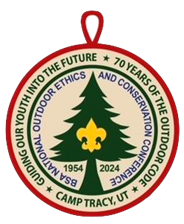
Conservation & Environment
Guiding Our Youth Into the Future 70 Years of the Outdoor Code
Main Conference: September 12-15, 2024
Pre-conference Courses: September 9-12, 2024
Location: Camp Tracy, Salt Lake City, UT
The National Outdoor Ethics and Conservation Conference is the Boy Scouts of America’s largest gathering of volunteers and professionals in the areas of Outdoor Ethics and Conservation. During the two days of the conference you can experience:
- Elective sessions
- Keynote speakers
- Exhibits with great ideas to take back to your council
- Guided discussions with land management professionals
- Representatives on-hand from Leave No Trace and Tread Lightly!
- Contests
- Fellowship with other Scouters who are passionate about conservation
Registration is open now! For more information about this exciting opportunity, please visit the following website: https://www.scouting.org/outdoor-programs/oec-conference/
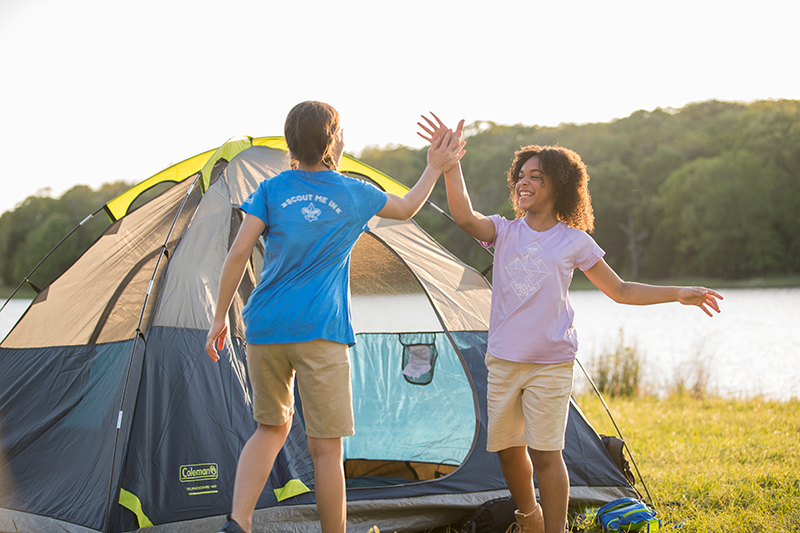
NCAP
Planning a short-term camp within the Boy Scouts of America (BSA) framework requires meticulous attention to safety considerations. The BSA’s National Camp Accreditation Program (NCAP) provides a comprehensive set of guidelines to ensure the well-being of participants. While NCAP offers valuable standards that help create a safer environment, short-term camp administrators and event organizers must still be proactive in addressing safety concerns. This article briefly introduces ten critical aspects of safety planning when organizing a council-sponsored short-term camp under NCAP guidelines (scouting.org/ncap).
Site Assessment:
Before anything else, organizers must conduct a thorough risk assessment of the event location. Using the NCAP Site Appraisal Form is a great start, especially if your short-term camp is not held at a BSA NCAP accredited property. Identifying potential hazards such as uneven terrain, wildlife encounters, or proximity to bodies of water is crucial. Addressing these risks in advance allows for effective mitigation strategies to be put in place. Check out NCAP Standard SA-002 for details on assessing your site location.
Staff Training:
A well-trained staff is the backbone of a safe camp. Organizers must ensure that all staff members are proficient in first aid, emergency response, and BSA safety protocols. Regular training sessions and drills contribute to a quick and effective response in case of emergencies. Ensure you have thoroughly reviewed the training required for each position and the programs you will offer. The Staff Qualification “400” series standards are a critical place to start. Be sure to view the verification section for each standard so you know what training verifications specifically to look for.
Health and Medical Considerations:
Accurate health records of all participants, including dietary restrictions and medical conditions, should be collected during registration. Having qualified medical personnel on-site is required, and an emergency medical plan must be in place, including having a copy of the current medical policies for your council. Touch base with your local council health supervisor to be sure you have the most current copy. Check out the HS “500” series standards, especially HS-503, HS-505 and more. For detailed requirements for your camp health officer for your location, review SQ-405.
Transportation Safety:
If the camp involves transportation, adherence to BSA transportation policies is paramount. This includes driver qualifications, vehicle maintenance, and seatbelt usage. Additionally, organizers should have a contingency plan for unexpected travel-related issues. In 2024 information was included in NCAP standard PS-216 to also include additional youth protection considerations as well.
Campsite Security:
Ensuring the security of the campsite is critical for the well-being of participants. Adequate lighting, secure sleeping arrangements, and surveillance measures should be in place. Event organizers should collaborate with local law enforcement to address any security concerns in the surrounding area. When is the last time your camper security plan was updated for your specific short-term camp location? This would be a great project for your local council enterprise risk management committee. Visit NCAP standard AO-804 for details on camper security.
Aquatics Safety:
If the camp involves water activities, event organizers must strictly adhere to BSA aquatics guidelines. Ensuring proper supervision, life jacket usage, and emergency response plans for water-related incidents are essential components of a safe short-term camp. The 2024 NCAP standards and the Guide to Safe Scouting “Safe Swim Defense and “Safety Afloat” policies will help you plan for aquatics activities at your short-term camp.
Fire Safety:
Camps often involve campfires, cooking, and other fire-related activities. Compliance with BSA fire safety guidelines, including supervision during cooking, and appropriate fire extinguishing equipment, is crucial to prevent accidents. Review NCAP standards FA-703,705,706 as you plan your short-term camp.
Weather Preparedness:
Unpredictable weather conditions pose a significant threat to camp safety. Monitoring weather forecasts, having an emergency shelter plan, and educating staff and participants about weather-related risks are essential components of safety planning. NCAP standard AO-805 helps each of us prepare for all types of emergencies, including weather. These emergencies may vary based on the time of year you are hosting your short-term camp.
Communication Protocols:
Establishing effective communication channels within the camp is vital. Whether through two-way radios, designated meeting points, or other means, clear communication ensures a rapid response to emergencies and facilitates coordination among staff members. NCAP standard AO-807 has details on how you can be prepared to communicate effectively.
Emergency Evacuation Plan:
Every camp must have a well-defined emergency evacuation plan. This plan should account for various scenarios, including natural disasters or medical emergencies. Regular drills should be conducted to familiarize staff and participants with evacuation procedures. A full list of emergencies you must have a plan for are included in NCAP standard AO-805. This list should also be reviewed by your local council enterprise risk management committee to determine if any other plans should be developed for your specific event and location.
Organizing a short-term camp under the standards set forth in the National Camp Accreditation Program requires a comprehensive approach to safety planning. Each short-term camp must have a currently certified Short-term camp administrator as well. By addressing risk factors, prioritizing staff training, and implementing robust safety protocols, event organizers can create an environment where participants can enjoy enriching experiences while minimizing potential hazards. Ultimately, the goal is to uphold the aims of the Boy Scouts of America while emphasizing the safety of all involved in the camping experience. It’s a new year so be sure you use the newest standards – 2024. These standards and other critical resources are available online at www.scouting.org/ncap.
Additional resources:
National Camp Accreditation Program – 2024 Standards
Guide to Safe Scouting
Standards at a Glance (Short-term Camp)
Scouting.org Short-term Camp webpage

Camping
Introducing Cub Scouts and their parents to the thrill of day and overnight camps requires a thoughtful marketing strategy that combines the best practices from the Boy Scouts of America and successful initiatives from local BSA councils. Leveraging social media, website improvements, and print media can create a dynamic and impactful campaign that resonates with families seeking enriching experiences for their young Scouts.
Social Media Engagement:
Harnessing the influence of social media platforms is a cornerstone of modern marketing. Successful local BSA Councils often excel in creating engaging content for Facebook, Instagram, and Twitter. For instance, sharing real-time updates during camp sessions, posting testimonials from enthusiastic Cub Scouts, and hosting live Q&A sessions with camp organizers can generate excitement. Be sure to incorporate visually appealing graphics and use targeted advertising to reach specific age groups and interests within the Cub Scout community. How you promote day camp will look different than marketing an overnight camp.
Website Improvements:
Your website is the entry point to converting interest to a registered camper. Local BSA councils who have the best success have websites with easy navigation, vibrant visuals, and detailed information on activities. The Greater New York Councils BSA, for instance, provides a comprehensive online platform featuring camp highlights, safety measures, and a parent resource section. You could even consider incorporating a blog or news section for regular updates, and ensure the website is optimized for mobile devices for convenient access. Likely the majority of individuals who use your camp website(s) are doing so from their mobile device.
Print Media Campaigns:
Print media remains a helpful tool for reaching parents and Cub Scouts with camping information. Local BSA councils, such as the Greater St. Louis Area Council, effectively utilize newsletters and newspapers to share success stories and camp highlights. Brochures and flyers distributed in schools and community centers serve as tangible reminders. Don’t forget to align with BSA guidelines for design and content. You could also consider collaborating with local businesses to sponsor and distribute promotional materials. This collaboration can help take financial pressure of your camp budgets.
Testimonials and Success Stories:
One of the most persuasive marketing tools is the authentic voice of satisfied parents and Cub Scouts. Think of how you decide to buy a product. You likely read reviews from others. Consider the use of testimonials in various marketing materials. The Northern Star Scouting Council in Minnesota, for instance, features video testimonials on their website, showcasing the impact of camp experiences. Encourage parents and Cub Scouts to share their stories through written testimonials, photos, and videos to build trust and credibility.
Highlight Educational and Developmental Benefits:
Share the outcomes of camp! Camp delivers the educational and developmental benefits of Scouting programs. Each of us should work to effectively incorporate these messages into camp marketing. The Michigan Crossroads Council, for instance, highlights skill-building activities, leadership development, and character-building experiences in their camp promotions. Align the camp’s offerings with the BSA’s educational goals and values, emphasizing the holistic development of young Scouts. Parents have many choices of where to send their kids to camps of all types. This focus on why Cub Scout day or overnight camp is so important can resonate with a parent who is looking for a camping program that helps build resilience and skills in their child.
In conclusion, marketing day and overnight camps to Cub Scouts and their parents requires a comprehensive strategy that blends social media engagement, website improvements, and print media campaigns. By leveraging successful examples from local BSA councils and adhering to BSA guidelines, camp leadership can craft a compelling marketing plan that showcases the transformative and adventure-filled experiences awaiting Cub Scouts in the world of Cub Scout camp.

NCAP
In just a few months, the warm breeze will herald the arrival of summer. Families and adult leaders will be eagerly preparing their Scouts for the quintessential experience of summer camp. A critical component of a successful camp adventure lies in the creation of a well-balanced and nutritionally sound menu. Drawing on the expertise of Penn State in the realm of nutrition, Scout camps can develop a menu that not only caters to the unique needs of campers but also ensures they receive the essential nutrients for a summer camp week full of fun and activities.
For the last few years, the BSA has partnered with Penn State to support our camp menu and nutrition planning. Penn State advocates for a diverse array of food groups to form the foundation of a robust camp menu. Breakfasts can be fortified with whole-grain cereals, yogurt, and a selection of fresh fruits to kickstart the day with complex carbohydrates, protein, and vital vitamins. For lunch, incorporating colorful salads with lean protein sources such as grilled chicken or chickpeas ensures a nutrient-rich midday meal. Dinner options may include whole-grain pasta with a variety of vegetables and a lean protein source, offering sustained energy for the evening’s campfires or other activities.
Beyond the inclusion of diverse food groups, Penn State emphasizes the importance of portion control to meet the nutritional needs of campers without overindulgence. By offering a variety of options in appropriate serving sizes, campers can enjoy a range of flavors while maintaining a balanced diet. Snack choices can include a mix of nuts, seeds, and dried fruits, providing energy-dense and easily transportable options for between-meal cravings.
Ensuring food safety in camp settings is paramount, and Penn State provides valuable insights into proper food handling techniques. From safe storage practices for perishables to maintaining appropriate cooking temperatures, these guidelines help prevent foodborne illnesses in the camp environment. Additionally, incorporating non-perishable and easy-to-store items into the menu streamlines meal preparation without compromising nutritional value. Don’t forget to be prepared for special dietary needs. The big 8 recently became the big 9 (welcome sesame!) for major allergens. Double check your camp’s process for managing and supporting special dietary needs for your Scouts and Scouters. This a key aspect of customer service but also for the health and wellbeing of our campers.
Hydration takes center stage in Penn State’s approach to summer camp nutrition. With increased outdoor activities and potential exposure to higher temperatures, staying well-hydrated becomes crucial. Camp menus can feature hydrating options such as fruit-infused water, electrolyte-rich beverages, and watermelon slices to keep campers refreshed throughout their summer escapades.
In line with responsible camping practices, Penn State encourages eco-friendly choices in menu planning. Opting for reusable containers, minimizing single-use plastics, and emphasizing sustainable sourcing contribute to an environmentally conscious camping experience.
In conclusion, crafting a nutritious summer overnight camp menu inspired by Penn State’s recommendations ensures that campers not only enjoy their culinary experiences but also receive the essential nutrients needed for an active and memorable summer. By incorporating a variety of food groups, practicing food safety, promoting hydration, and adopting eco-friendly practices, camp organizers and families can contribute to the overall well-being and enjoyment of the camp experience. Visit the Penn State website to review the extensive collection of Penn State resources.
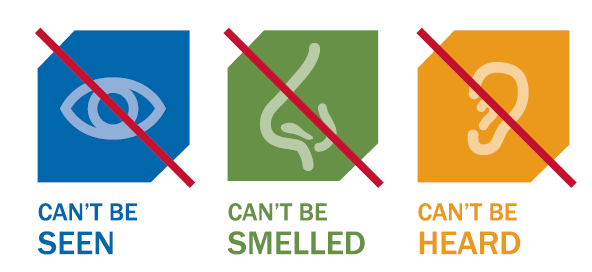
Camping
According to the Consumer Product Safety Commission, people die every year from carbon monoxide poisoning from the use of portable camping heaters, lanterns, or stoves inside tents, campers, and vehicles. Scouters often use many devices that can produce carbon monoxide. This includes trying to stay warm and overlooking the danger of bringing heating devices into enclosures or tents. As such, it’s essential to know about this hazard and what steps to take to prevent carbon monoxide poisoning in outdoor settings.
What is Carbon Monoxide?
Carbon Monoxide (CO) is a non-irritant, colorless, and odorless gas produced by the incomplete combustion of carbon-based fuels. In Scouting, CO is often found in the fumes of portable camping heaters, lanterns, or stoves. Your Scout camp facility likely has additional sources too.
Why is CO such a risk?
When breathed in, CO will bind to your blood’s hemoglobin with an affinity 200-250 times greater than that of oxygen. This means your blood cannot deliver the oxygen needed by your organs and tissues. Like choking, you deprive your body of the necessary oxygen you need to survive.
What are the symptoms of CO Poisoning?
Symptoms resemble the flu and include headache, dizziness, weakness, upset stomach, vomiting, chest pains, and confusion. People sleeping can die from breathing in large amounts of CO before they even have symptoms.
How can I prevent CO poisoning?
Fuel-burning equipment such as camping stoves, camping heaters, lanterns, and charcoal grills should never be used inside a tent, cabin, or other enclosed shelter. During winter camping, be particularly careful if you create enclosed structures, such as wrapping outdoor pavilions or pop-up tents with plastic. Opening tent windows/doors or having small openings in enclosed areas is insufficient to prevent the build-up of CO concentrations from these devices.
What to do if you experience symptoms of CO poisoning?
Get outside to fresh air immediately! Also, contact a doctor immediately for a proper diagnosis.
No Flames in Tents
The Boy Scouts of America and other camping organizations have long adopted a policy of “No Flames in Tents.” Other than the apparent fire danger this action prevents, most don’t think of the CO poisoning risk it eliminates. Since CO poisoning provides no visual, sellable, or auditory clues, the “No Flame in Tents” policy can easily be extrapolated to no propane-powered heaters in tents or enclosures.
Camping
This will be a continuing series of articles on various aspects of the properties we own, lease, care for, and look to make better. As we all know, the program of Scouting is valuable to the growth of youth in this country and around the world. Where we deliver that program needs to convey that value and the coming articles are intended to assist us all in making that conveyance to our current users, as well as all our future users and their families.
In the last edition of Let’s Do Better, we discussed forests and the trees that make up those wonderful places folks in this organization like to spend quality time in! And while we talked about replanting and harvesting the various species that grow within those forests we didn’t talk very much about protecting them. Sure, we could talk about cutting break lines in case of fire. Installing roads through the forests so there’s access should fire occur (these can be minimal and combined with a break line is ideal). Maintaining a forest stand is a whole lot more than just cutting out the dead wood! But, how else can we protect this precious asset? Property Insurance.
Little thought was given to how complex and involved the topic of insurance was going to be. Like many, we know it’s a good idea to ‘carry’ insurance. Yes, we do pay for it. Why? No, not why do we pay for it. Why do we ‘carry’ it? Why do we pursue having insurance in the first place?
“Insurance is a means of protection from financial loss.”
That’s a line from the Wikipedia article on insurance much of this month’s article is based upon. A means of protection from financial loss.
The idea of insurance if you will, is quite old. In fact, similar “transferring or distributing risk” was practiced in the 3rd and 2nd millennia BC. Traders in that day spread their goods across several transport vehicles with the expectation that one or more of the transports would not make the journey. The vehicles at the time were vessels on the rivers and streams by which traders moved their goods to a market. A few factors could possibly overturn a vessel and the cargo was lost. In this way, the trader insured at least some of his goods made it to market, if not all.
“The law of general average constitutes the fundamental principle that underlies all insurance.”
Tablets from the dynasty of Nerva-Antonine in the ruins of the Temple of Antinous in Aegyptus (Egypt) in approximately 133 AD during the reign of Hadrian of the Roman Empire prescribed rules and membership dues of a burial society. In essence, early burial insurance. Other concepts of insurance have been found in 3rd century BC Hindu scriptures. In ancient Greece they developed marine loans in order to ensure their cargo was delivered in order to receive payment in full. The idea of a separate contract to insure something was invented in the 14th century in Genoa. Life insurance to cover a person was not created until 1583, in London. Property insurance can be traced to the Great Fire of London in 1666 which consumed more than 13,000 homes. In fact, in the 1680s the first fire insurance company was established at the back of the Royal Exchange, the very place the first life insurance policy was written. As London grew as a center for trade the demand for marine insurance increased. Edward Lloyd saw the opportunity, opened a “coffee house” whereby shippers would meet with folks who were willing to underwrite a shipment thus creating Lloyd’s of London as an insurance market.
So, even though insurance has been around for centuries, most of the varying types of insurance we know today have really been developed since the late 18th century. Even today new types of policies are created in response to world events.
But the question remains, why? Insurance is basically a pooling of funds from many, to pay for losses incurred by a few. Most of us have car insurance. We pay monthly premiums, the pool, and file a claim when we encounter an accident. If the claim meets the terms of the policy, we’re paying premiums on, the insurance company pulls from that pool of funds we’ve been contributing to along with many other drivers and pays us, or the company repairing the damage, what’s required to fix, or “make whole again” what we possess. Then we can drive our newly repaired vehicle down the road again. Easy enough, right? The line, “If the claim meets…” is loaded with a lot of subjects to be dissected a bit to better understand the purpose of this month’s article for Let’s Do Better when looking at our property insurance!
You all know that numerous insurance companies exist. We do have a choice when it comes to the purchase of insurance in whatever form we’re looking to acquire. And to say there’s a choice is a big understatement! Insurance companies exist because they make money. In 2020, insurance companies in the US of A had $2.5 trillion in direct premiums written. Yes, that’s trillion with a ’T’! That’s a bunch of billions, and a whole lot more millions. You all also know that when you file a claim the expectation is one of apprehension as to the effort it’s going to take to get something out of the insurance company to help you pay for your loss. But yet, they have trillions!
Also remember you entered into this contract, the policy, with the insurance company. You pay premiums for the coverage which should be stipulated in that contract. The insurance company when you file a claim has to examine the terms of your contract with them, see that it meets the terms of paying you for your loss, and then distributing funds. This all takes time as you are not the only person insured. As all of the contracts, policies, are not the same clarifying the loss and how it meets the terms of it may be more involved than a simple “I was in an accident. I need to repair my car. Please pay me so I can repair my car and get on with my life” scenario. Why is that?
Again, you are one of many paying into a pool of funds by which claims are drawn from.
Given some of the catastrophic events that have occurred, the insurance companies cannot just pay every claim as each needs to be vetted and shown to be accurate and true. Some insurance companies have gone out of business as they exceeded the funds to pay claims on. Not a good scenario for you in that one! So, again, why mention this?
You need to pay attention to several items when purchasing property insurance. Plain and simple.
Are you purchasing the correct type of insurance contract (policy) for what it is your
insuring? What’s the value of the item your insuring? The value today and if it’s an item that appreciates, the value in the coming years. This is what you are protecting! This is the potential loss item. What are the parameters that you and the insurance company agree to for your potential loss? This would be the terms under which the insurance company will reimburse you for the loss of the item insured.
And that is where a lot of folks get confused and where the unhappy circumstances of trying to get that reimbursement come from. You simply don’t understand the terms you agreed to! And you wouldn’t be alone in that! More than likely, you wanted a low premium. But, from the insurance company side you’re contributing to the pool a little, but when you make a claim, the expectation is the company will pay you fully for your loss. From their side you haven’t contributed enough to the pool to be compensated that way and if you looked at your contract that’s probably what it says. That’s where all the data the companies collect nowadays is crunched over and over again so they know practically to the penny what an accident like you’ve experienced should cost them. That’s how they figured your contract to protect the item you’re insuring and the terms of that protection.
So, next time you’re in the market for insurance, what are you going to look at? What questions will you ask and how closely are you going to examine the contract/policy? Yes, you want protection, but you want it fairly and to where it will adequately cover your loss.
Several councils in the organization have experienced devastating fires on their properties in recent years. They’ve lost buildings. They’ve lost the forests which grew on the property. They’ve lost the business side of the operation which has affected their financial position. Hopefully, we’ve all learned that some were better insured than others and have made appropriate adjustments to what our property insurance contracts cover. Pay attention to the terms of those contracts and what can be expected in the “to make whole again” process. Are you paying for simple coverage, or are you paying for replacement cost coverage? With the cost of materials and labor rising the way they are today, pay that extra so you can get your property back up and running more completely! Be sure to obtain the contract that best protects you and what your insuring. Insurance is not necessarily all that complex, but in many ways it helps all of us manage our property assets so we are minimally exposed to a substantial loss. And that protects us all!
See you next issue!
Dave Cornell
Architect
Mar ’22
The Outdoor Programs / Properties Team is ready to assist and guide in any respect to making the program of Scouting the best youth program! Reach out to any member of the team and we’ll endeavor to provide quality answers to any issue you may have and/or facing. We look forward to working together to make the program the best ever!

Camping
If there is one thing with which every Scout I talk to these days can agree, it is this—just how much we are all looking forward to getting back to camp this summer. After two years of spending too much time indoors and away from friends, the 2022 camping season calls to us with promises of adventure, fun, personal growth, and friends—both old and new.
With so many Scouts counting down the days to their summer camp adventure, I want to encourage each of us to ask, “Is your favorite camp ready to provide a mountaintop experience to the girls and women who will attend?”
Consider this: We go to the places we are invited, but we return to the places where we feel welcome. In too many instances, we have invited the girls and women in our community to join us in Scouting programs, but we haven’t done all the necessary work to make them feel welcome — to ensure that they will want to keep coming back.
Jack Welch, former CEO of General Electric, said, “Deal with the world as it is, not how you’d like it to be.” How does this relate to summer camp? It begins with getting truthful about what the readiness level of your camp REALLY is. We don’t solve anything by simply saying, “let’s just build single-gender bathrooms.” We must take a hard and honest look at where we are, or aren’t, regarding our camp structure, and consider where we need to be. Yes, I do understand cost is a factor but there are still ways to make improvements.
Start by pausing and asking what is working well and what is not? How can your camp work to make things better, to be more inclusive and welcoming to all who come and spend time on your properties and in your campsites?
So, let’s get practical and tactical! Here are my 12 tips to make 2022 the best camp experience that our Scouts have ever had.
Awesome Camp Tip #1: Words Matter. Let’s not differentiate between boys and girls; instead let’s just call them Scouts.
Awesome Camp Tip #2: Sell feminine hygiene products in your trading post.
Awesome Camp Tip #3: Put trash cans with liners in every bathroom stall. This is both welcoming and sanitary.
Awesome Camp Tip #4: Mark the gender of every bathroom, including gender-neutral facilities.
Although we could call these first four tips the “small things matter” section; in fact, they matter a lot. Why? Because attending to the small things makes the girls and the women in your camp feel welcome. If a female can’t properly dispose of a feminine product, or purchase one if she is in need, I can tell you from personal experience, she is not going to feel welcome.
Awesome Camp Tip # 5: Avoid terms such as “Smother mother” and “helicopter mom. At your camp, are adult females encouraged to attend along with their youth, or “to cut the umbilical cord?” When you hear these terms being used by staff, by Scouts, or by adult leaders, take a moment and explain why speaking about women in camp this way perpetuates a stereotype that says women complicate the camp environment, rather than contribute to it.
Awesome Camp Tip # 5: Re-evaluate your application process for staff.
Are leadership experiences that youth gain outside of Scouting valued, or do you base your assessment purely on Scout experience? There is a long list of experiences that prepare a young person to be a great camp staffer. Quality camp programs have a lot to do with a focus on customer service, and youth get that experience in various ways.
Awesome Camp Tip # 6: Take the feedback forms you get each week seriously.
We’ve all read a feedback form that is overly harsh and unfair. Those are easy to disregard, but does your camp have a practice of looking honestly at the feedback you receive, or are you rationalizing why you can disregard what you’re reading? Are you willing to pivot and adjust throughout your camp season to ensure that one person’s challenging experience this week does not become someone else’s challenging experience next week?
Awesome Camp Tip #7: Set behavior expectations prior to arrival for all units.
Share behavior expectations with unit leaders as part of pre-camp orientation information. Emphasize the expectations in staff training and review with campers during orientation each week. Provide a reporting example and make it clear that reporting of unacceptable behavior is mandatory. Everyone in camp is responsible for ensuring a healthy and welcoming environment for all campers! It is NOT our job to decide whether a situation merits being reported; it is our job to report issues and allow camp leadership to assess the situation and decide what action to take.
Awesome Camp Tip #8: Make sure all units know what to expect each day of camp, prior to arriving. Don’t assume legacy knowledge from any unit or leader. Offer a pre-camp Q&A session.
Awesome Camp Tip #9: Swimwear — stop using the word MODEST.
From the National BSA Aquatics Subcommittee; “We recommend that swimwear should be comfortable, functional, and appropriate for the specific aquatic activity. As always, we remind everyone that Scouting’s Barriers to Abuse state, ‘Appropriate attire is required for all activities’. Policies should reflect the BSA’s statement and commitment to diversity, equity, and inclusion.”
Awesome Camp Tip #10: Establish an Upstander culture in your camp.
Create a see-something, say-something expectation among staff, campers, and adult leaders. Make public statements to of expectations. Ensure it’s clear to everyone in camp that certain behaviors are not appropriate and will be addressed quickly if they occur.
I ran a camp for youth and adults with disabilities for 10 years. Trust me when I tell you that everyone knows when something has “happened” in camp. Often the details are not appropriate to share with everyone, but your transparency in sharing that there’s been an incident and it is being handled, and then using this as a teachable moment to remind everyone about rules and expectations, is an example of your leadership!
Awesome Camp Tip #11: Stop making exceptions or excuses for bad behavior by anyone in camp, especially when it is displayed by adults.
The notion that we don’t want to make Scouter X upset because he or she has given 25 years or even 50 to Scouting is not acceptable. . We need to treat everyone equitably.
Awesome Camp Tip #12: It takes all of us working together to impact change. Find and focus on your allies and let them help influence others
Find the people at your camp, and in your council, who want to make Scouting an equal and fair space for all youth to thrive. Align yourselves with them. Ask for their help. Get to know the other women in your council. Introduce yourself to other women in camp. Work together. Find the leaders already in place in your Scouting community who want to help you and let them! Often those leaders already in place are men. They may be men who are equally passionate about our camps being a safe and welcoming place for girls and women to enjoy Scouting. Look for them. They can teach you a lot, and you can teach them too!
I’ll leave you with this vision for the future of Scouting:
Let’s make sure every Scout camp in our country embraces the opportunity to provide a welcoming place for all girls and women, so that they can contribute to a thriving Scouting movement. All of us can help improve Scouting for each young person. Please share with us via outdoorprograms@scouting.org ways that you helped provide an even more welcoming environment for your campers.
Now let’s go camping, see you on the Scouting Trail!

Aquatics
As Scouts we strive to remain active outdoors year round and for many of us that means be out in cool to very cold air and potentially cold water temperatures. Whether you are hiking along a creek or lake or paddling on the water if accidently fall in cold water your chances for survival are good if you understand how your body responses to cold water and how you can best support yourself until help arrives.
Dr. Gordon Giesbrecht of the University of Manitoba has performed extensive research on cold water exposure and has the following recommendations.
First, let’s consider water temperatures. Water temperatures for swimming can be simply classified as “Pleasant” (68F – 77F); “Ok, once used to it” (59F – 68F); “Brisk, nippy” (50F-59F); “Darn cold” (41F – 50F); and “FREEZING” (32F – 41F, remember). In “Pleasant” conditions it is fun and easy to with swim without any additional cold protection (like a wet suit). With “Ok” conditions you will feel a bit cool at first but get used to it. When the water is “Brisk” it will feel very cool when you first get in but with experience you can swim for a while before hypothermia is a serious risk. At “Darn cold” water temperature it is painful to get in and only short swims of a few minutes can be tolerated before significant risks occur. And, as you might expect, at “Freezing” it is extremely painful to be in the water and the time in the water should be limited to only a minute or two. Also, remember, in general, water temperatures do not change as quickly as air temperature during the course of the day and once water gets cold, say due to cold nights, the water is unlikely to warm up much in the day. So, it could be that if you fall into water during cold seasons, it is possible for the water to be cooler than the air temperature during the day. Another thing to keep in mind is that fresh water freezes at 32F and salt water at a colder temperature. So, although salt water may not be frozen the water temperature could actually colder than “freezing” (32F).
Dr. Gordon Giesbrecht of the University of Manitoba has performed extensive research on cold water exposure in humans and has the following recommendation for what to do if you find yourself in cold water.
The 1 Minute; 10 Minute; 1 Hour Principle.
So, let’s explore more about what happens when you accidently immerse yourself in cold water. First, the good news, you can survive a fairly long time in cold water if you DON’T PANIC, stay calm and follow these steps to help yourself.
Cold Shock Response. In cold water the immediate response of your body is to uncontrollably gasp for air and hyperventilate (think about the time when your big brother doused you with a bucket of ice water). So, first, DON’T PANIC and keep your head above the water. This this is critical because you can easily inhale (aspirate) water into your lungs which is extremely dangerous. Keep reminding yourself to stay calm, keep your head above water and control your breathing. Adjust your breathing so that it is steady and evenly paced. Once you have steadied your breathing and you have relaxed as best you can you can then consider what actions to take next.
After 1 minute in very cold water Cold Incapacitation begins to impact your body functions. This is due to the effect of cold water on your nerves and muscles. It becomes painful to move your muscles and your ability to control your muscles becomes increasing worse. This hampers your body’s ability to move or hold on to things. Over the next 10 to 20 minutes under these conditions the symptoms will continue to a point where the use of your limbs is basically useless. Therefore, you must quickly plan on what to do and then carry out your plan prior to complete loss of useful muscle function. The primary goal now is to quickly (within 10 minutes or so) get as much of your body out of the water as possible. If you were in a boat, Don’t Panic, control your breathing and get to the boat and try to get in or crawl on top of an overturned boat. If you fell into a lake or river from the bank or a bridge, the same applies, Don’t Panic, control your breathing and find something to climb on or find a spot to get out of water within 10 minutes.
The longer you are in the water the greater risk of developing hypothermia. If you cannot self-rescue by getting your body out of the water you then must begin to prepare for the possibility of hypothermia. Hypothermia, is the decrease of your body’s core temperature. Many factors contribute to hypothermia and how fast it can happen. This includes the water temperature, how much of the body in immersed in the water and your own body’s size and condition. In cold water (water below 68F), most people will become hypothermic in 1 – 2 hours. So, if you haven’t been able to get yourself out of the water you need to think back to your Scout aquatics training (Swimming merit badge) to the H.E.L.P. position in cold water (Heat, Escape, Lessening, Position). That can make a big difference in slowing down the onset of hypothermia. This can only be effectively done if you have your lifejacket on so that’s another great reason to always wear your lifejacket when in a boat! If you are with one or more buddies the best thing to do is to get into a HUDDLE position where you crowd together to conserve body heat. This action also slows the onset of hypothermia.
Once you become hypothermic you will eventually lose consciousness. At that point you have around another hour or so until you may experience cardiac arrest. In all cases, when out on a hike or on the water you should always be certain your leaders must know where you are and when you are expected back. If you are late returning, they should begin to search for you to provide help.
So, remember, if you find yourself accidently immersed in cold water remember the 1 minute, 10 minute and 1 hour principle and: 1) Don’t Panic; 2) Keep you head above the water and try to control your breathing; 3) Make a plan for getting as much of your body as of the water as quickly as possible; 4) If you cannot get out of the water within 10 or so minutes assume the HELP position or if with buddies, then Huddle-UP to delay the onset of hypothermia. Always wear your lifejacket when in a boat and also always be sure your leaders know your plans when going on a hike or boating so if you are late returning, they can find you and give your help.

Properties
If your camp location experiences heavy snowfalls during the winter months, your roofs may be at risk of collapsing. It’s not just the amount of snow, but also the snow’s water content that contributes to the overall weight. One inch of water weighs 5.2 pounds per square foot, and snow can have different distributions of water content. A particularly wet snowfall can pose a greater danger for your roof, and rain falling on the snow can triple its weight.
The following tips from Church Mutual can help you prevent roof collapse from snow:
- Regularly inspect your roofs for damage. Well-maintained roofs are less susceptible to snow collapse. Perform an annual inspection on every roof at your camp — or hire a contractor to do so. Remember to follow all safety regulations.
- Watch for warning signs that may indicate structural weakness in your roofs. Warning signs to keep an eye out for include:
- Doors or windows that are difficult to open.
- Cracking, popping or groaning sounds.
- Bent or deformed metal roof supports or beams.
- Walls that have cracks or are bending outward.
- Roofline or decking that is sagging or wavy.
- Determine the maximum safe snow depth for each roof. This should be based on each roof’s load capacity as determined by an engineer during the planning and construction process. If you don’t know the load capacity of your camp’s roofs, consider enlisting the services of an engineer to provide you with this crucial information. It’s also important to know the type and amount of snow your camp location typically receives.
- When snow accumulates at your camp location, keep an eye on your roofs. Many camps do not maintain full-time staff on-site during the off-season. If that’s the case for you, be sure to implement a process for monitoring snow depth on your roofs throughout the winter. Watch for snow in roof valleys — low areas of the roof that may end up bearing a larger load of snow than other areas. Check the downwind side of pitched roofs, and if there are dormers or other structures on your roof, watch for accumulation of snow along the sides.
- Remove snow from your roofs before it reaches 50% of the safe snow depth. You can do this by using a roof rake. If this cannot be completed from the ground, consider securing the services of a qualified, licensed contractor, given the risk involved and the potential for damage to the roofs.
- When removing snow from your roofs, do so uniformly, in layers. This will prevent unbalanced loads, which could cause a collapse. Again, consider using a qualified licensed contractor to help you remove snow from your roofs.
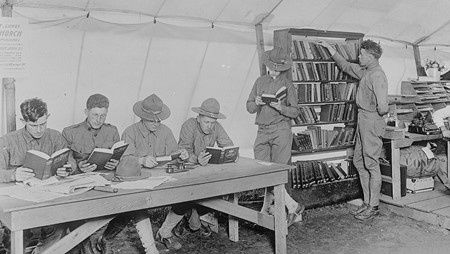
Camping
Ninety years ago, we made the very first standard-issue backpack for the Boy Scouts, the Yucca Pack. Ever since then, Diamond Brand Gear’s partnership with Scouts has been one of the most enduring and impactful parts of our legacy as a company.
It was crafting durable, top-quality goods for Scout camps and councils — from bags and gear to our flagship canvas wall tents and packable Scouting tents — that first marked our entry to the world of gear craftsmanship.
It’s only fitting, then, that we honor this partnership as the title sponsor of this year’s Boy Scouts of America National Outdoor Conference.
Why we’re proud to be 2021 BSA National Outdoor Conference sponsors
As the largest biennial gathering for Boy Scouts of America employees and volunteers, we’re thrilled to collaborate on such a key cornerstone of leadership in Scouting today. (And we were happy to donate commemorative messenger bags made from reclaimed tent materials, too!) Our support for the Scouting community goes far beyond a weekend’s event, though.
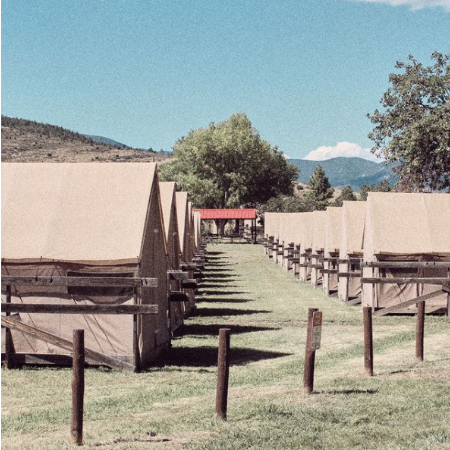
Tested by us, trusted by Scouts
From Camp Daniel Boone in North Carolina to the 137,000-acre Philmont Scout Ranch in New Mexico, our tents, made by hand in the Blue Ridge foothills, are favored by Scout camps across the country for a reason. We craft them to last, using only the most durable of fabrics, sealed seams, triple reinforced corners and sturdy grommets. Tested in the harshest of conditions, and with an in-house repair shop to boot, our tents are designed to keep powering scouts’ adventures for generations.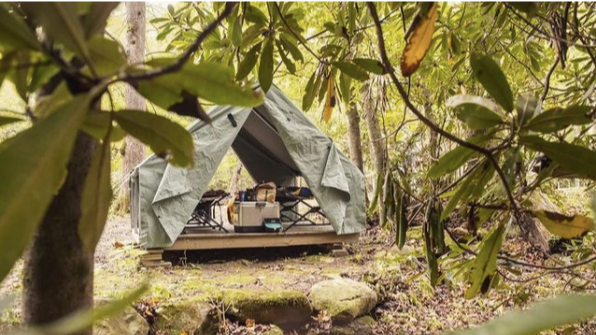
Have any upcoming Scouting adventures of your own? Feel free to check out more of our time-tested, handcrafted gear for Scouts by tapping the button below. Your partners in adventure,The Diamond Brand Gear team
This article is sponsored by Diamond Brand as part of their great donation to the 2022 National Outdoor Conference.
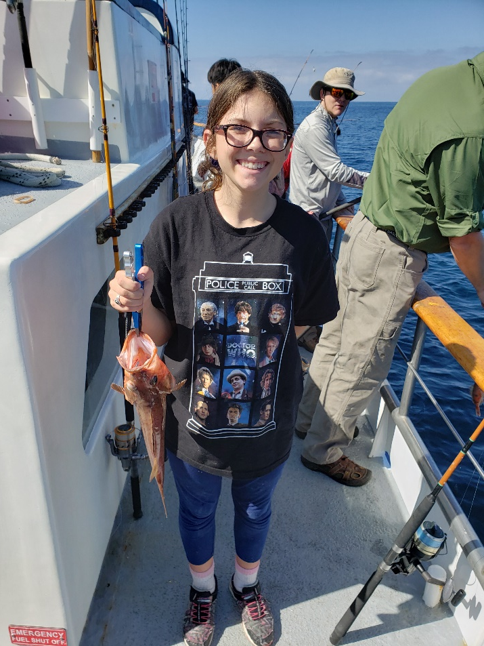
Fishing
Where is the best place to spend your program dollars? For Scouting Executives and Volunteers, this must be the million-dollar question.
What is the purpose of spending these precious dollars? The Wildlife Conservation Profession has a initiative called R3. The three R’s stand for Recruitment, Retention and Re engagement. If you don’t know this, virtually all wildlife conservation dollars are raised by the sales a licenses and related equipment. All guns, ammunition and fishing related gear has a tax on it for funding conservation. The State Agencies whose job is conservation know this and have initiatives to recruit sportsmen and women to fish and hunt.
We in Scouting should see R3 in our ranks also. We should be thinking R3 for both Youth and Adult Volunteers.
Boy’s life magazine did a survey. They asked Cub Scouts and Boy Scouts what activities they expected to do after 3 months after their registration. Their answer at the top was Camping and hiking. The Cub Scouts had fishing as #5 and the Boy Scouts had fishing as #3. Surprisingly, these were both above shooting.
So, to have satisfied customers, you need to meet their expectations. Do we inherently make a promise to the youth by their expectations and don’t meet them? How about looking at fishing as your hook? (Pardon the pun, I just couldn’t help myself)
Here is one way to start. Consider having a Certified Angling Instructor Class (CAI) in your council. This class will give you more knowledgeable and enthusiastic Volunteers. Your Fishing, Fly Fishing and Wildlife Conservation Merit Badge Counselors are your target market for this class.
From the CAI class, see if you can start a Council Fishing Committee. You will need a leader who has the management skills to run a committee. This Committee runs fishing events in your council.
It is really that easy.
If you want more Youth, look at fishing. It is the best bargain in Scouting!
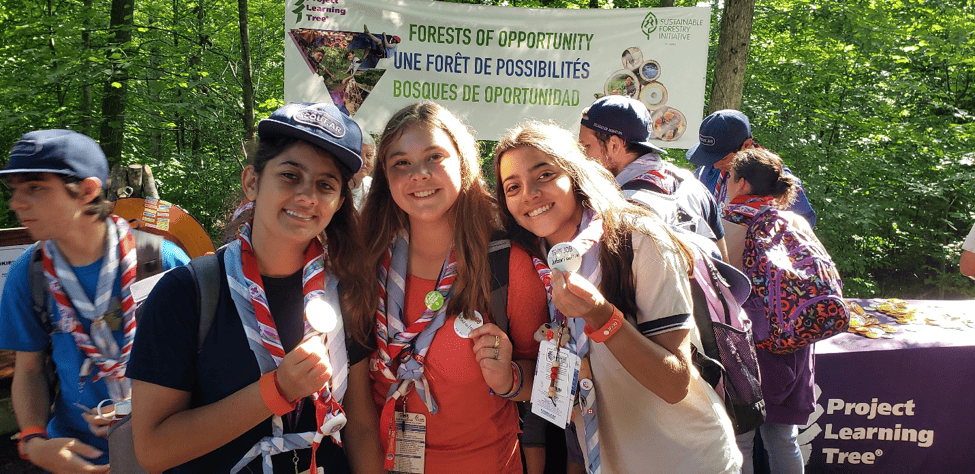
Outdoor Ethics/Leave No Trace
CONSERVATION THROUGH FOREST MANAGEMENT CERTIFICATION. Sustainability is a consideration for today’s council properties. Scouting principles promote responsible use of natural and human resources such as forests, water, land, outdoor ethics, and good stewardship of BSA lands for today and tomorrow. Continuous improvement and measured results are part of a sustainability program. Certification to Sustainable Forestry Initiative® (SFI) Forest Management Standard provides a proof point for responsible – and measurable – management of forest resources.
SFI® is an independent, non-profit organization with a mission to advance sustainability through forest-focused collaborations. Currently over 100,000 acres of both Philmont and the Summit Bechtel Reserve are SFI certified. This means that these properties have conservation plans that are in compliance with the SFI Forest Management Standard that promotes healthy forests.
The SFI Forest Partners Program, which is a partnership between SFI, Meredith, National Geographic, Pearson, Macmillan, Hearst Enterprises and Boy Scouts of America have provided assistance for initial certification, including funding for assessments of potential participants’ plans, consulting fees, and initial audit readiness.
To learn more about the Sustainable Forestry Initiative, visit www.sfiprogram.org. To learn more about how SFI is collaborating with BSA, see www.sfiprogram.org/scouts/.
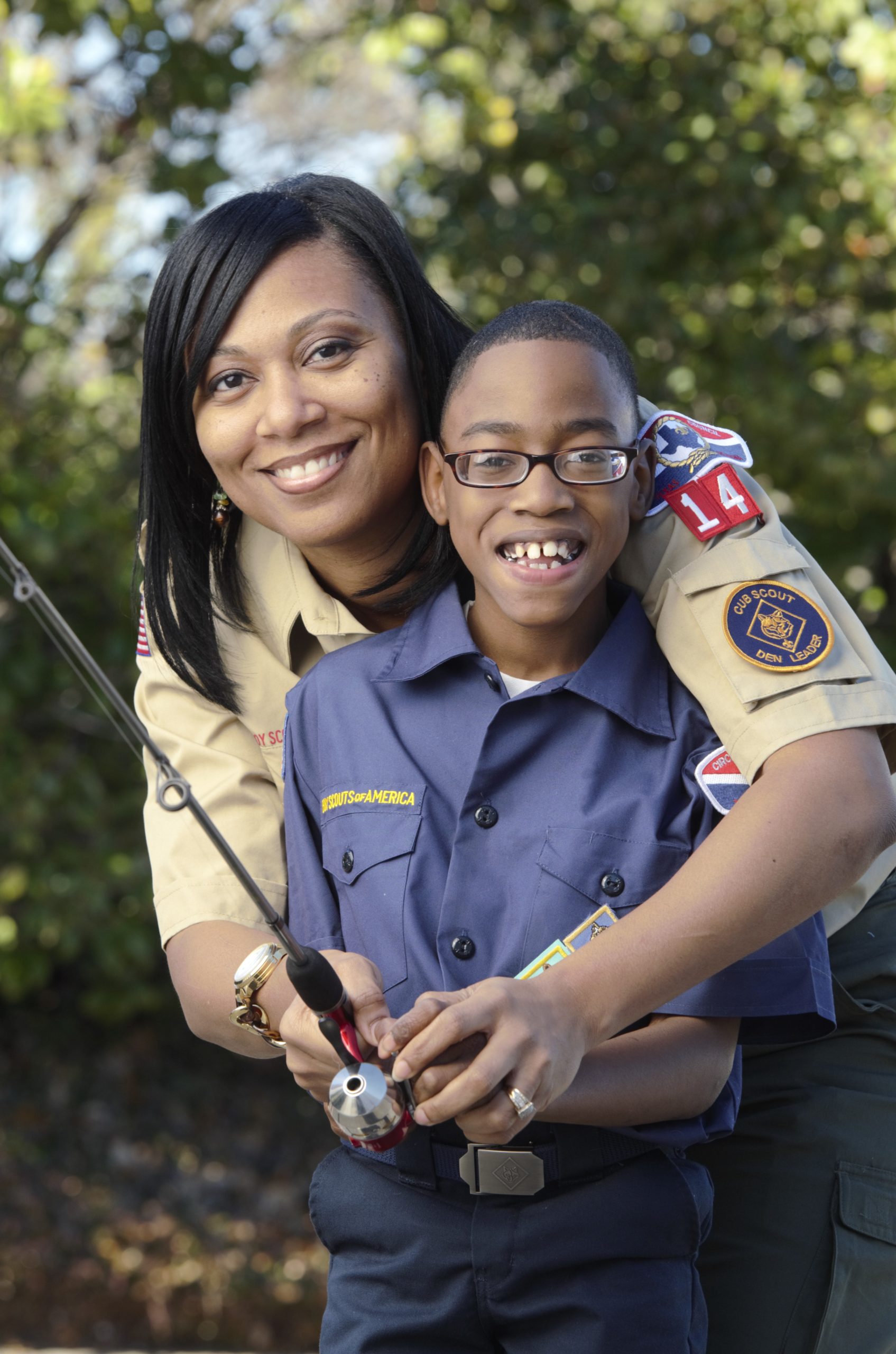
Fishing
What makes fishing such a great outdoor activity? Especially today, we are not fishing to feed our families. We fish for the challenge of fooling the fish into thinking we can imitate the natural environment and their prey. Many times, we catch and release the fish. We do this so we can keep a resource and possibly catch them when they have grown bigger.
Most times we go fishing not to catch fish but, to be outside many times sitting next to a beautiful mountain stream or rocking with the blue ocean. It is an activity that will transport us away from the stresses of everyday life and the only thing we can think about is concentrating on what we must do next to catch that fish.
The act of fishing drives us to want to preserve this experience for ourselves. In the long run, it makes us want to preserve it for future generations. From this, we learn about wildlife conservation. Fishing teaches us to care about things beyond ourselves.
The fact is that I would probably not be a Scout Leader without fishing.
My father was raised in a very poor part of Los Angeles from a poor Japanese immigrant family. The local Catholic Church had the best school in the area. My Grandparents valued education as the way out of poverty so my dad and his brother we enrolled in that school.
That school had a Boy Scout Troop. My father told me that his lifetime love of fishing came from learning to fish in Boy Scouts. He passed his love for fishing to me and enrolled me in Scouts as soon as I was old enough. I did the same thing when my son was old enough to be a Tiger Scout. My dad only became a Second Class Scout but he always lived by the Scout Oath and Law.
We, as Scout Leaders, have many opportunities to influence many generations ahead of us. It is why most of us are Scout Leaders. It would have to be obvious to you why, I have chosen fishing as my way of keeping Youth active in our movement. We all must have that special bait to keep and retain Youth. Therefore, fishing is my tool.
Email blast!
Email blast!



